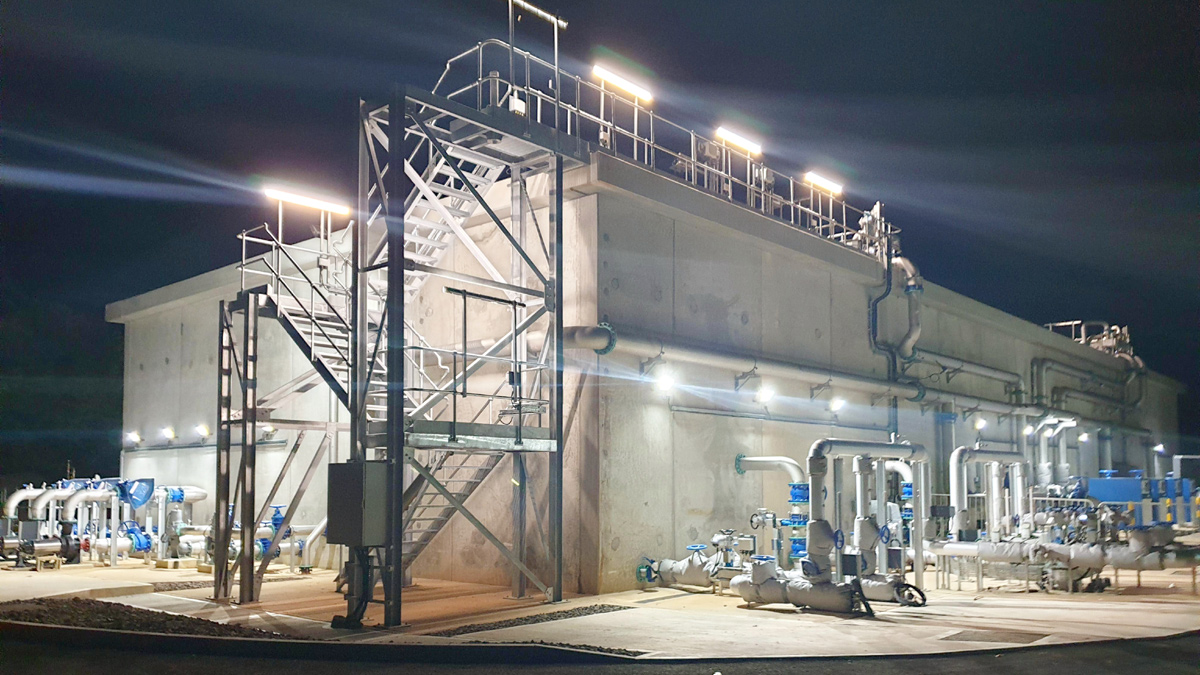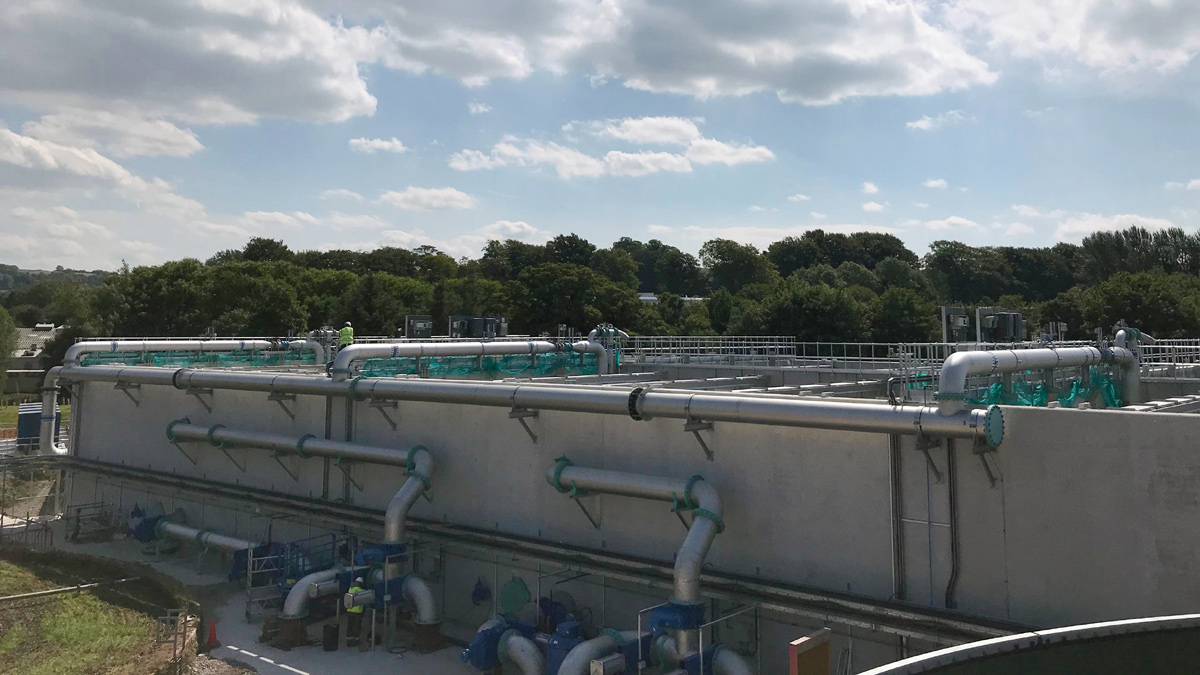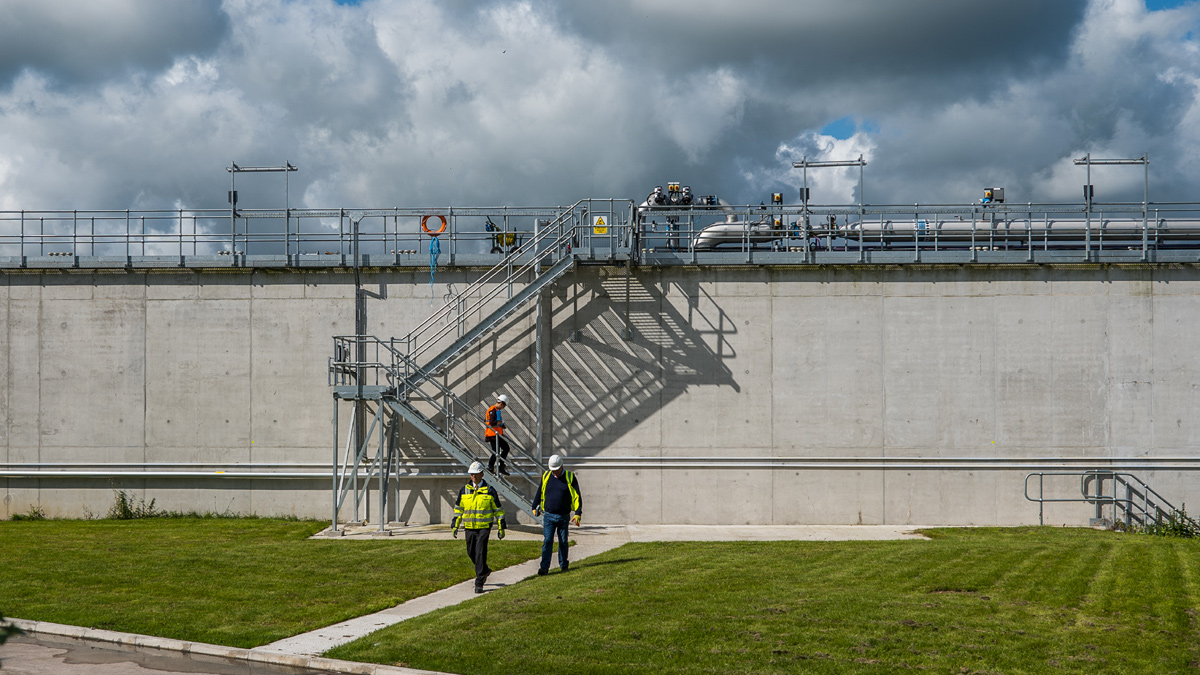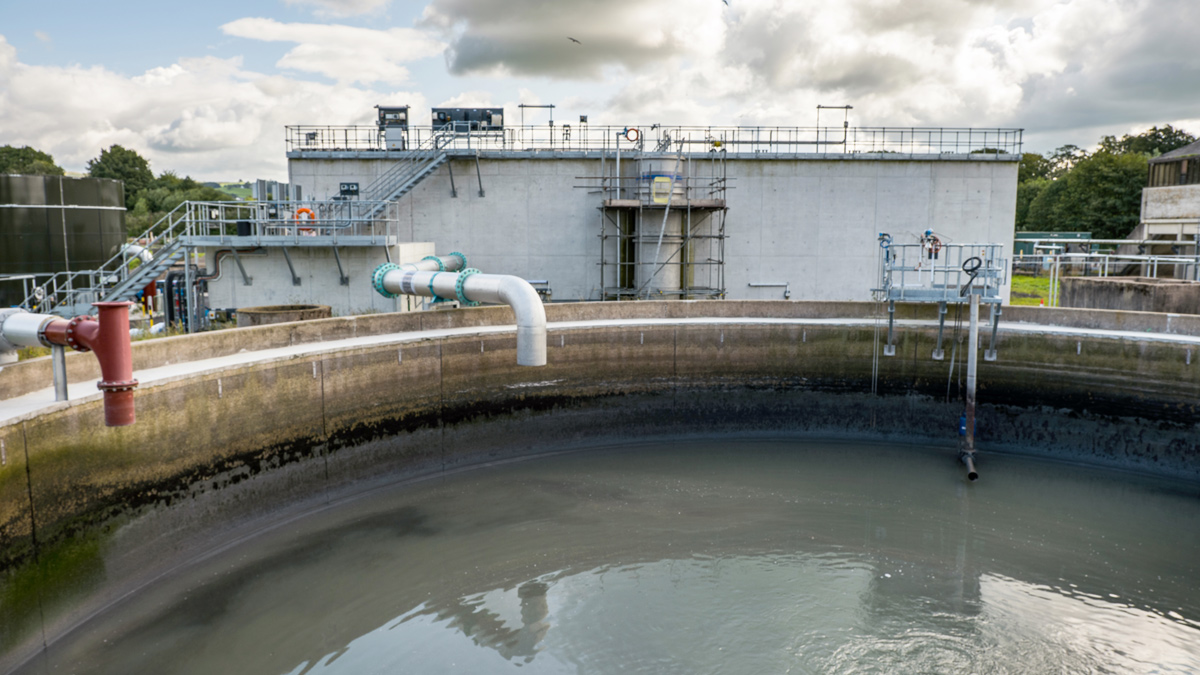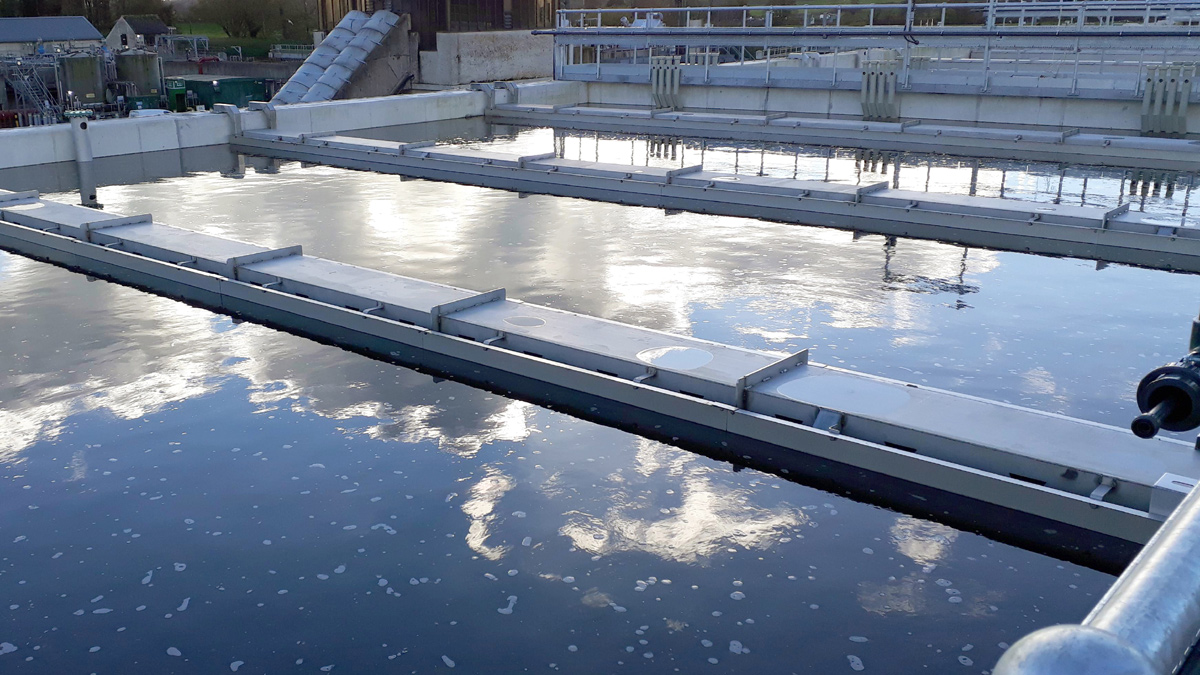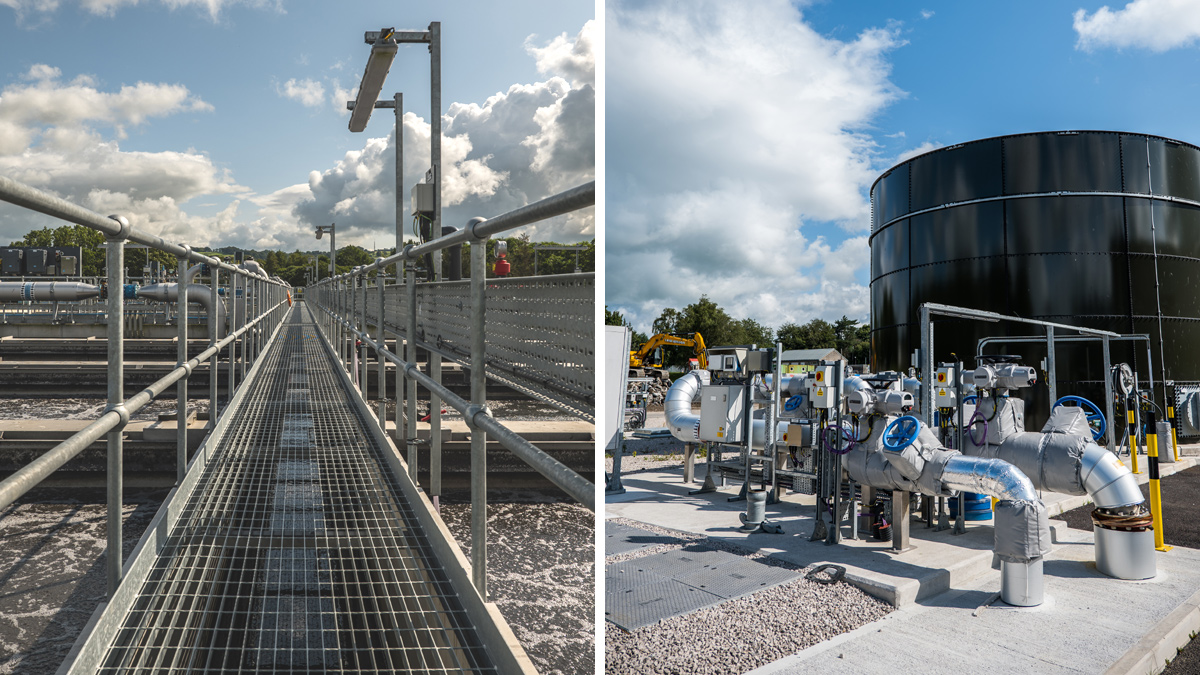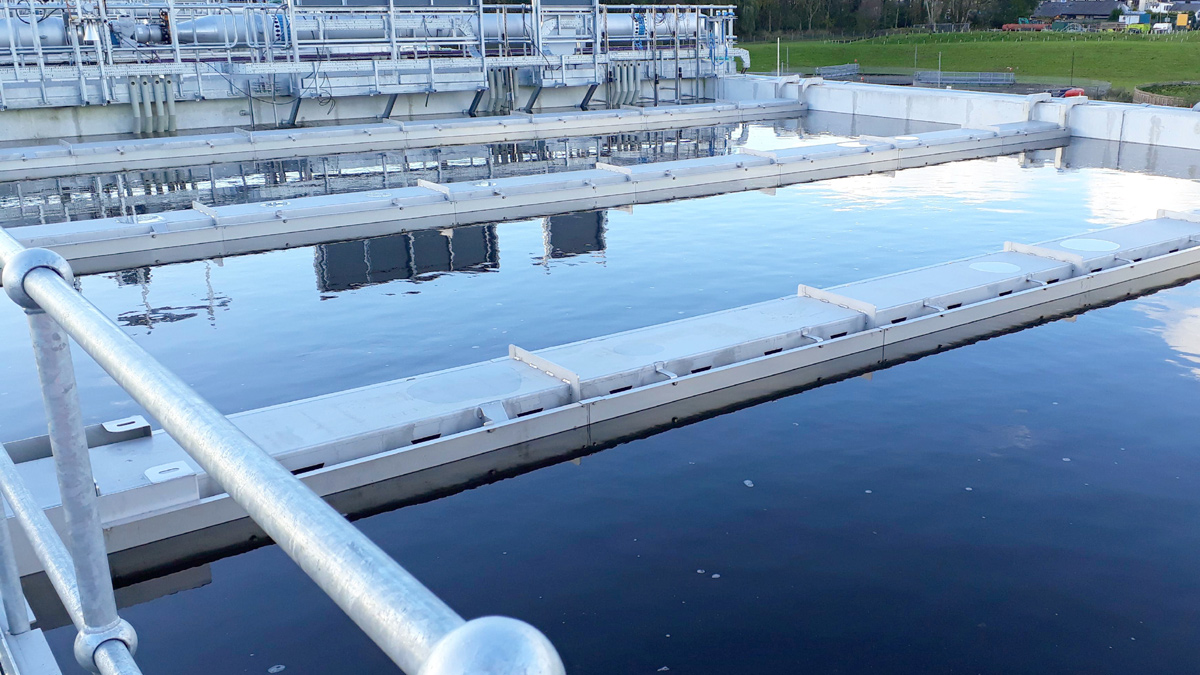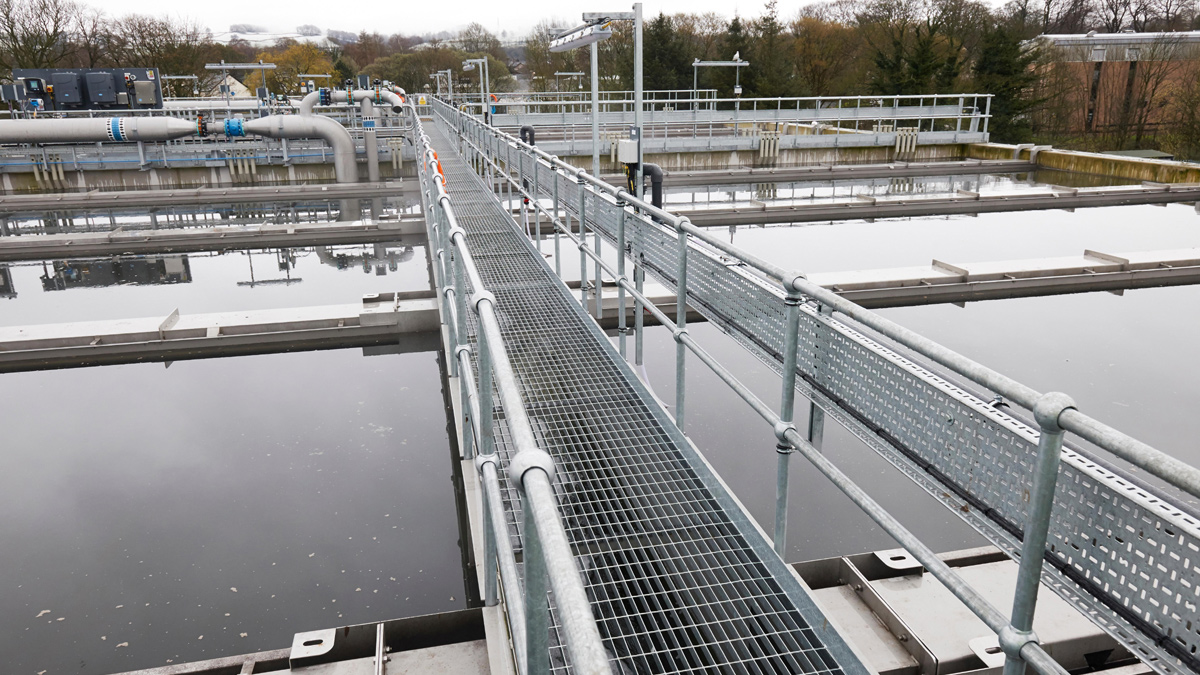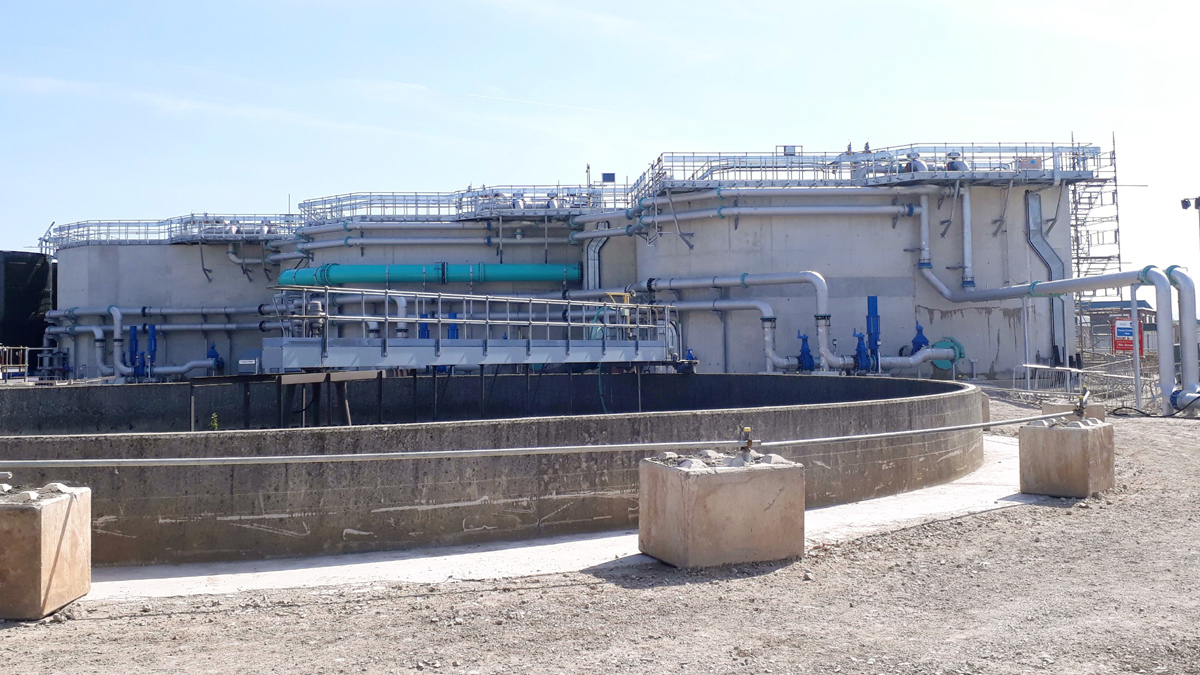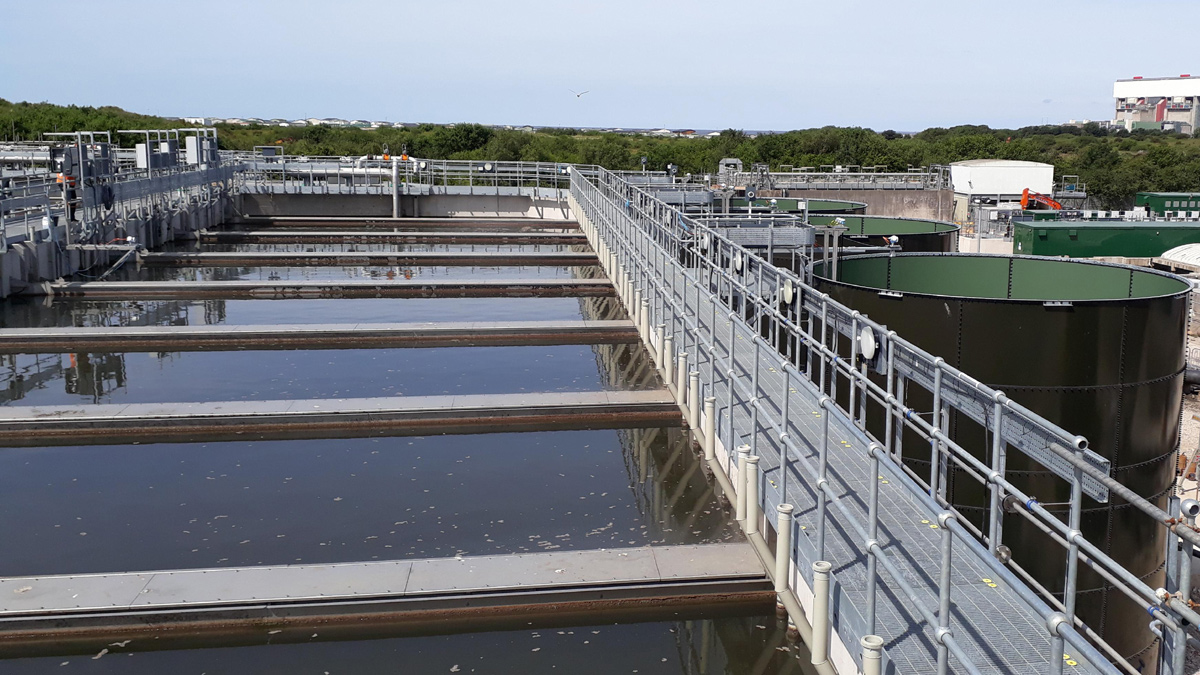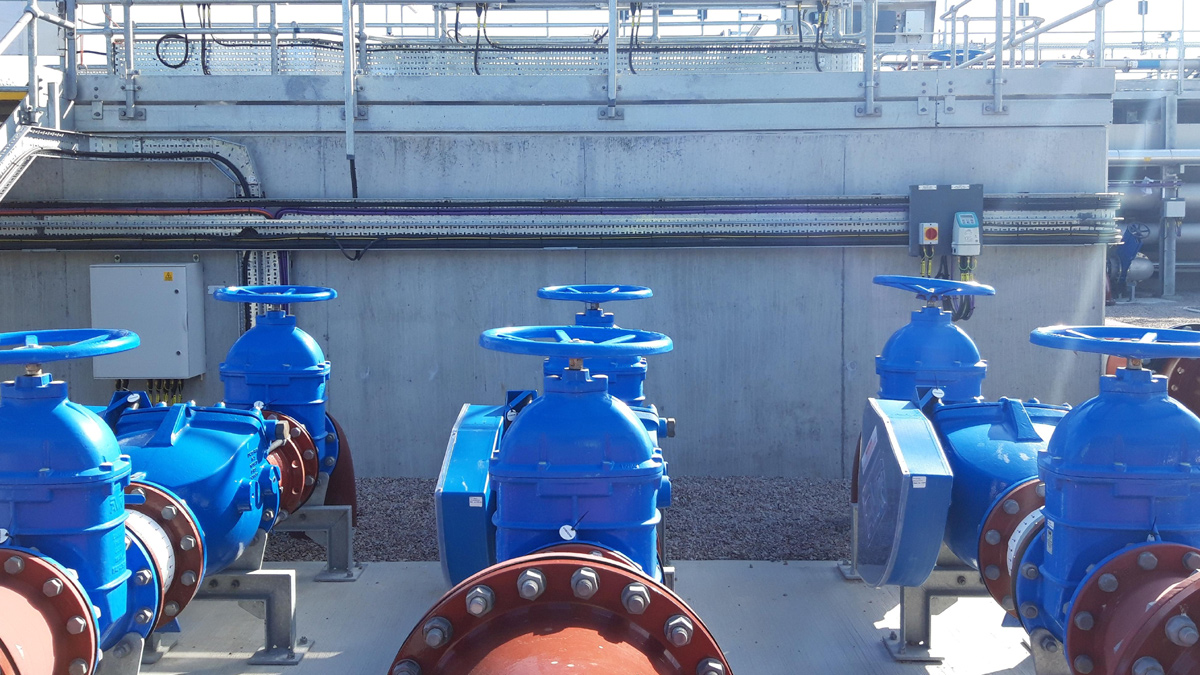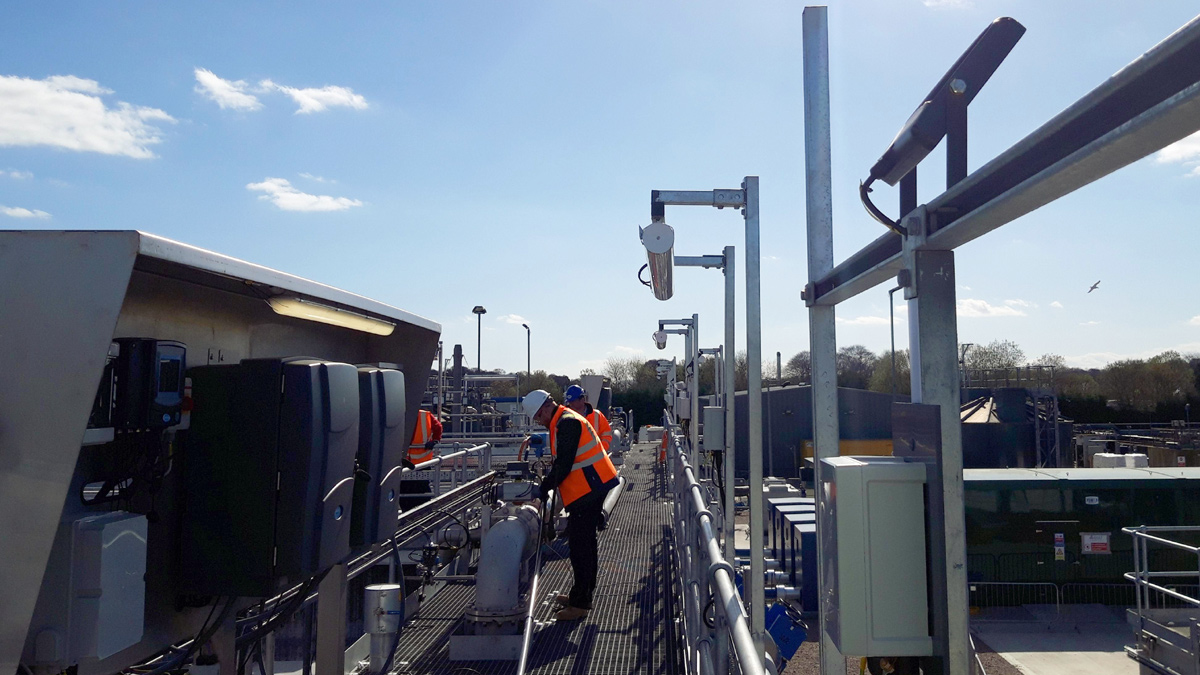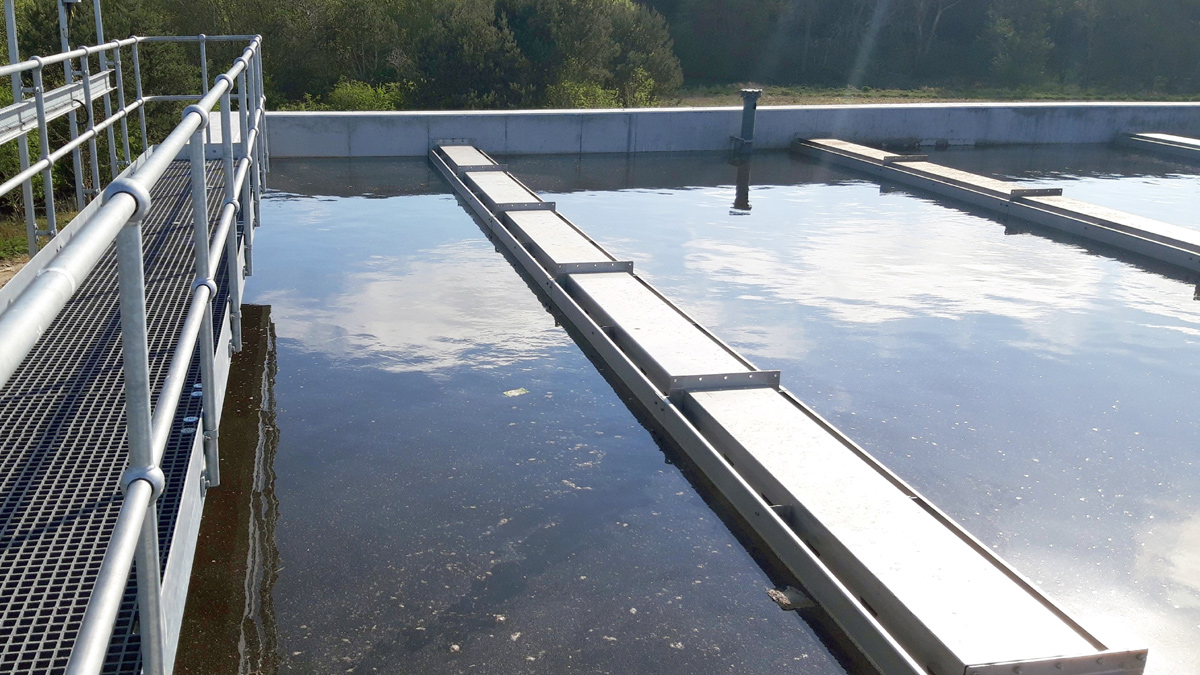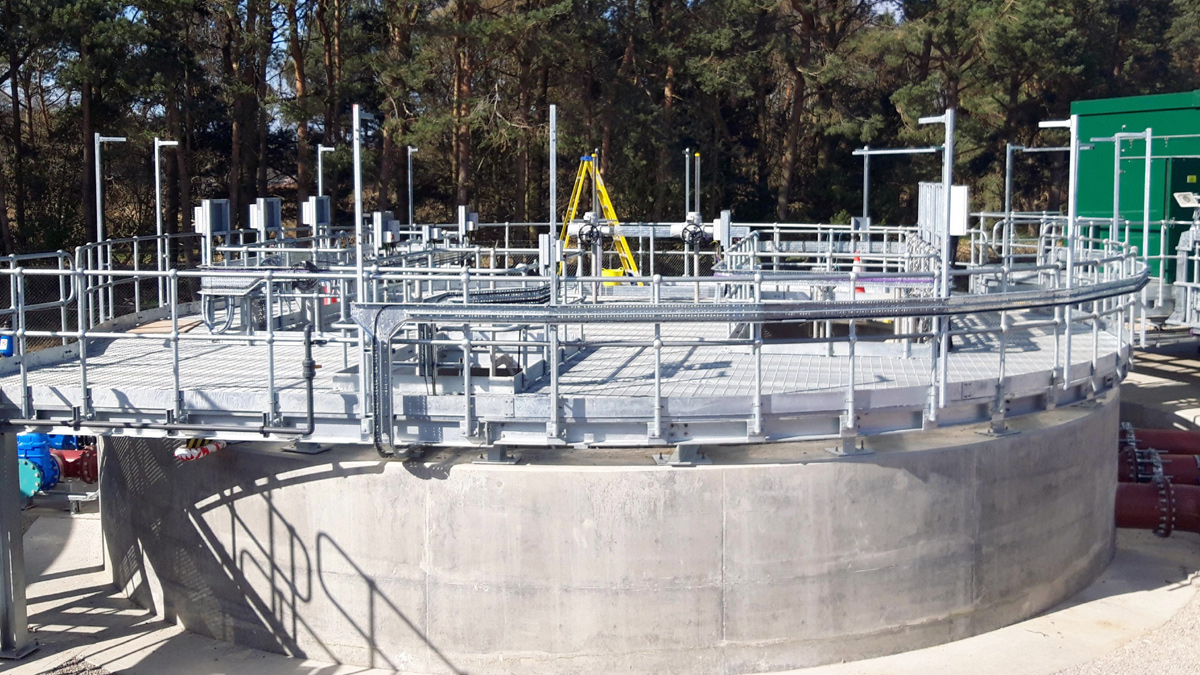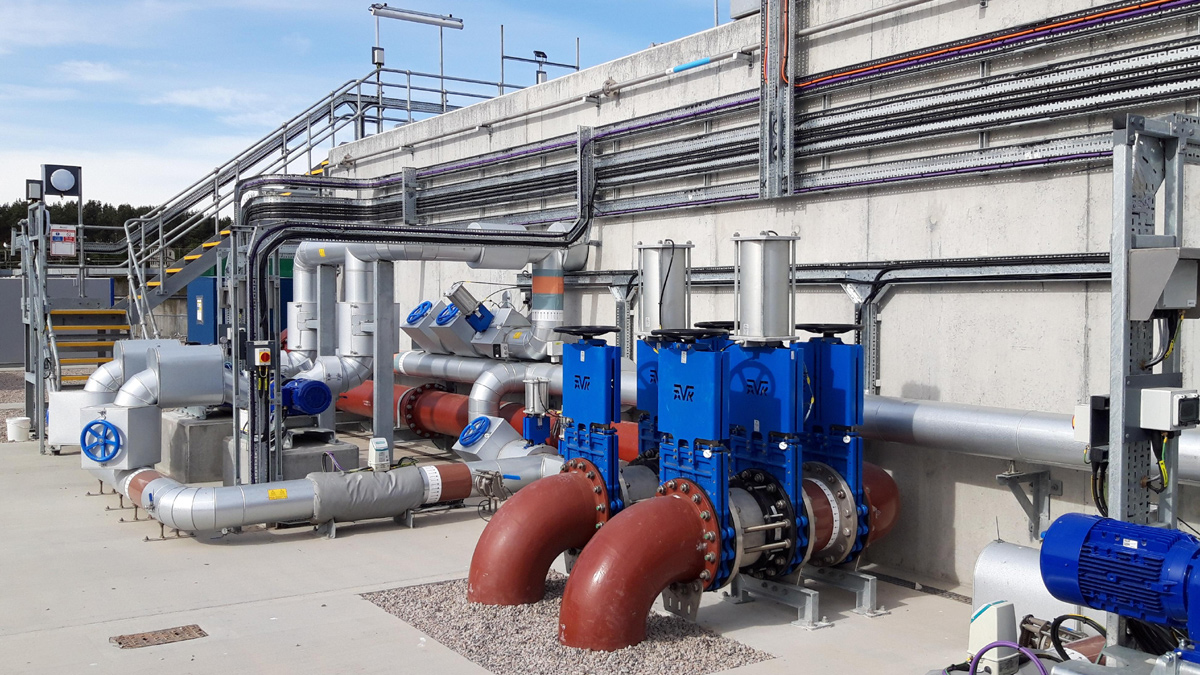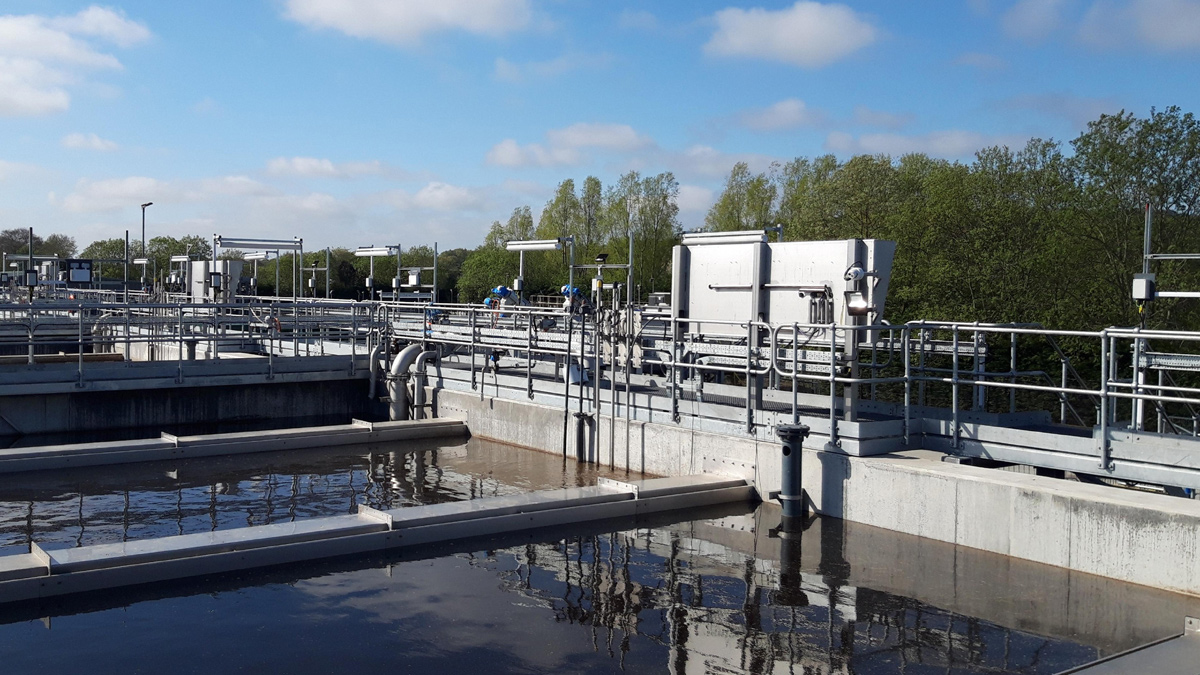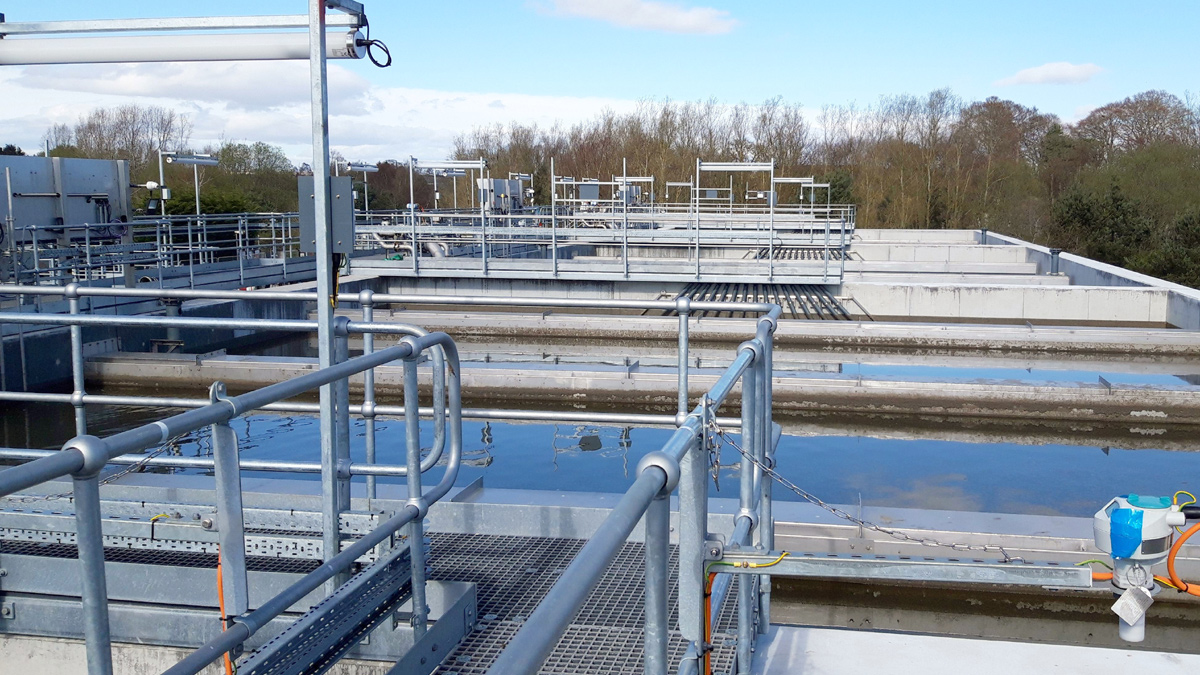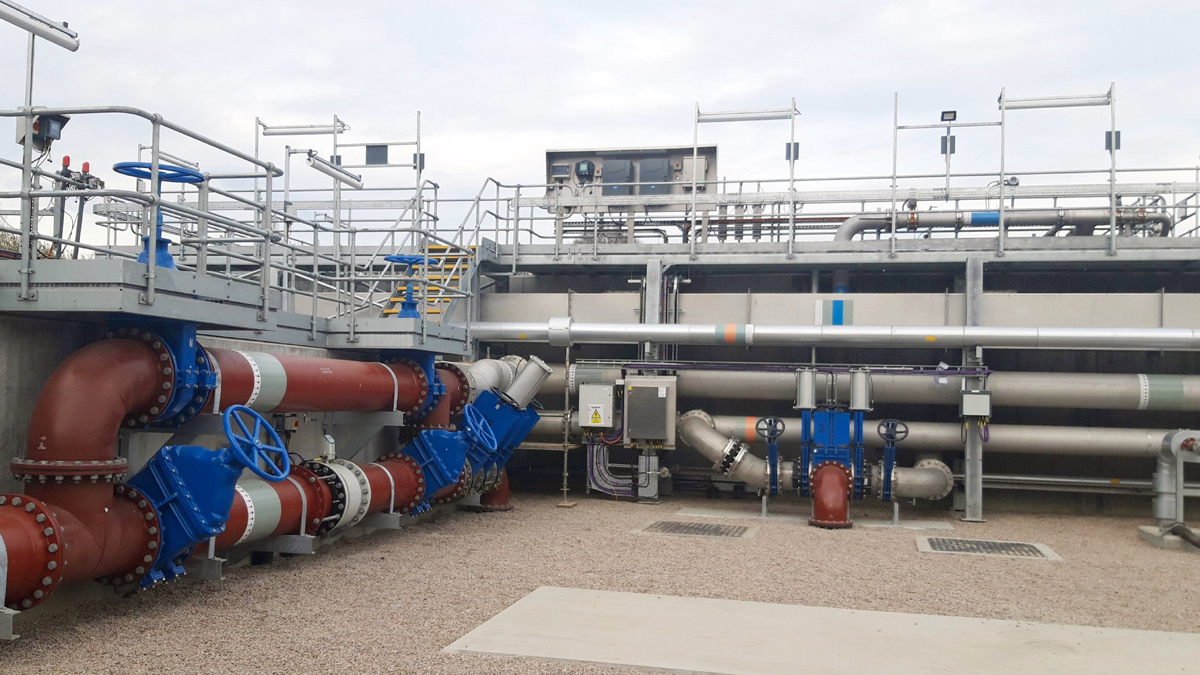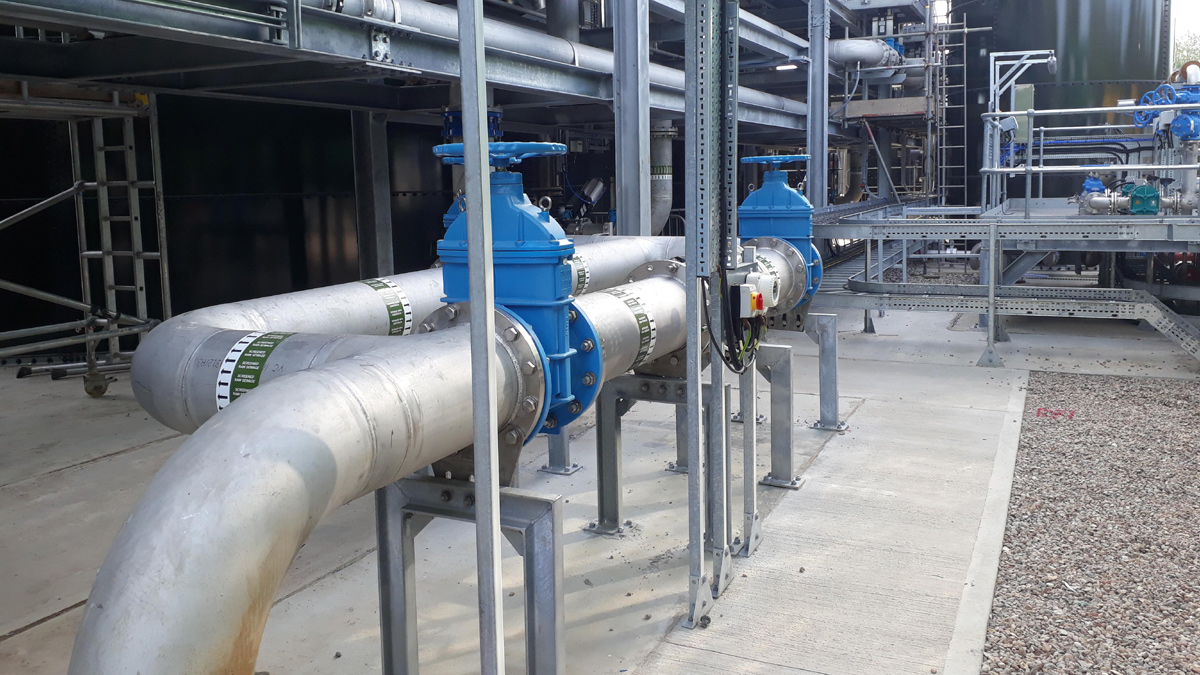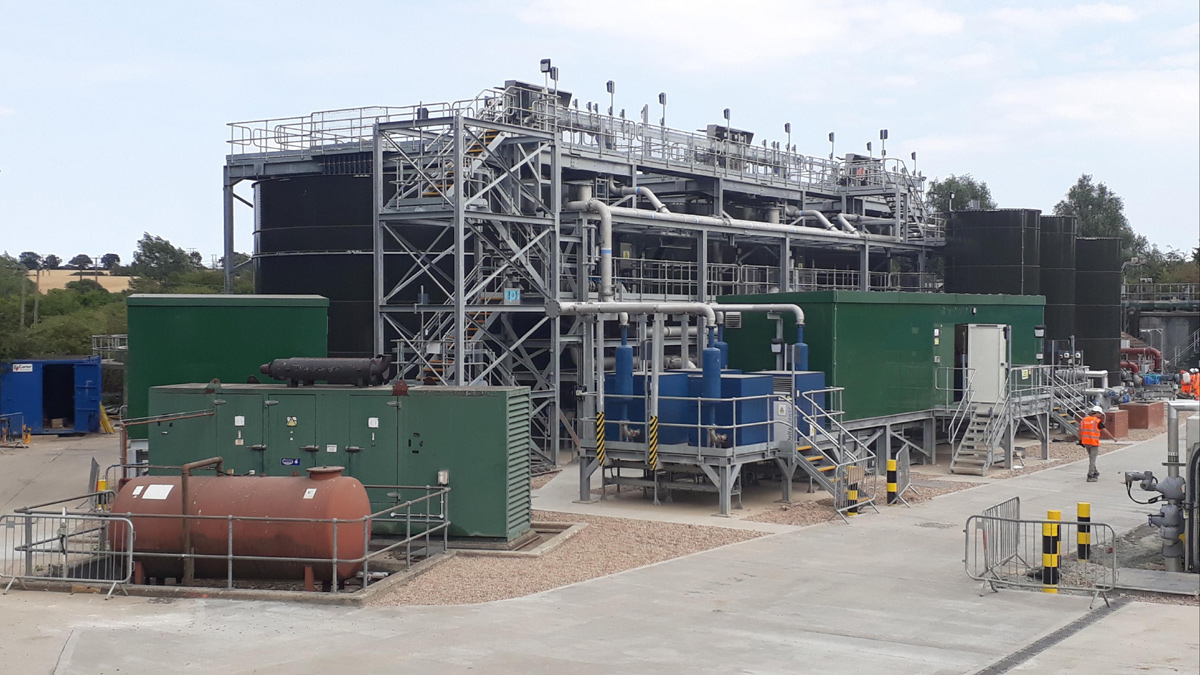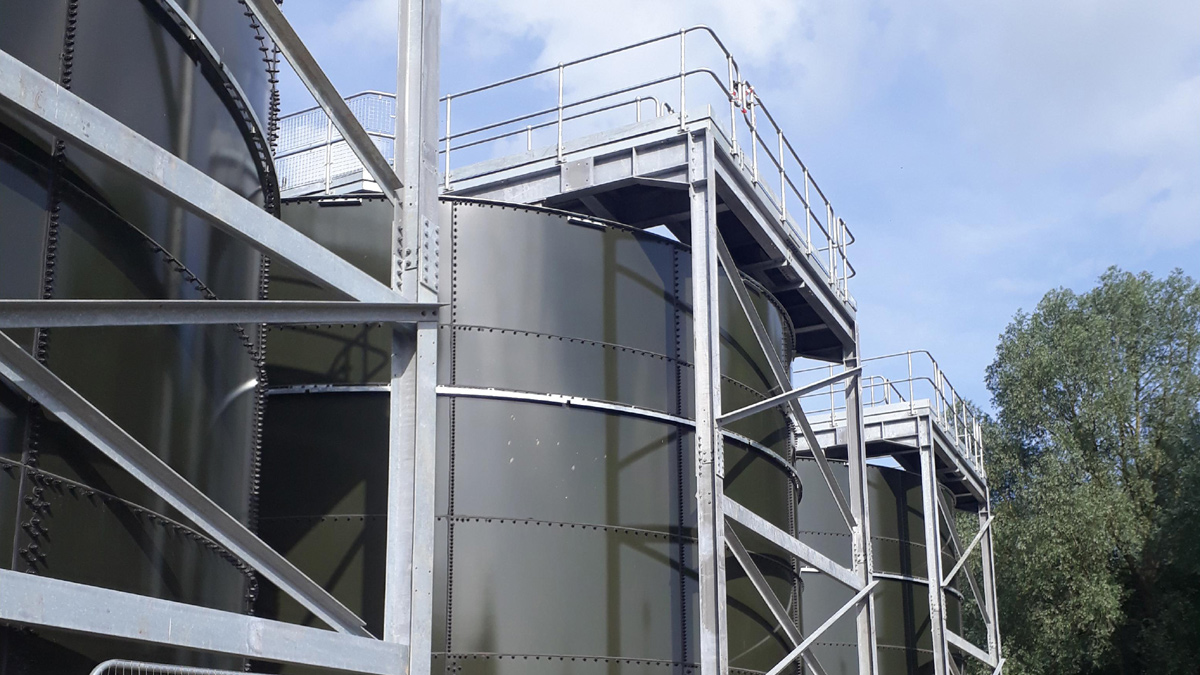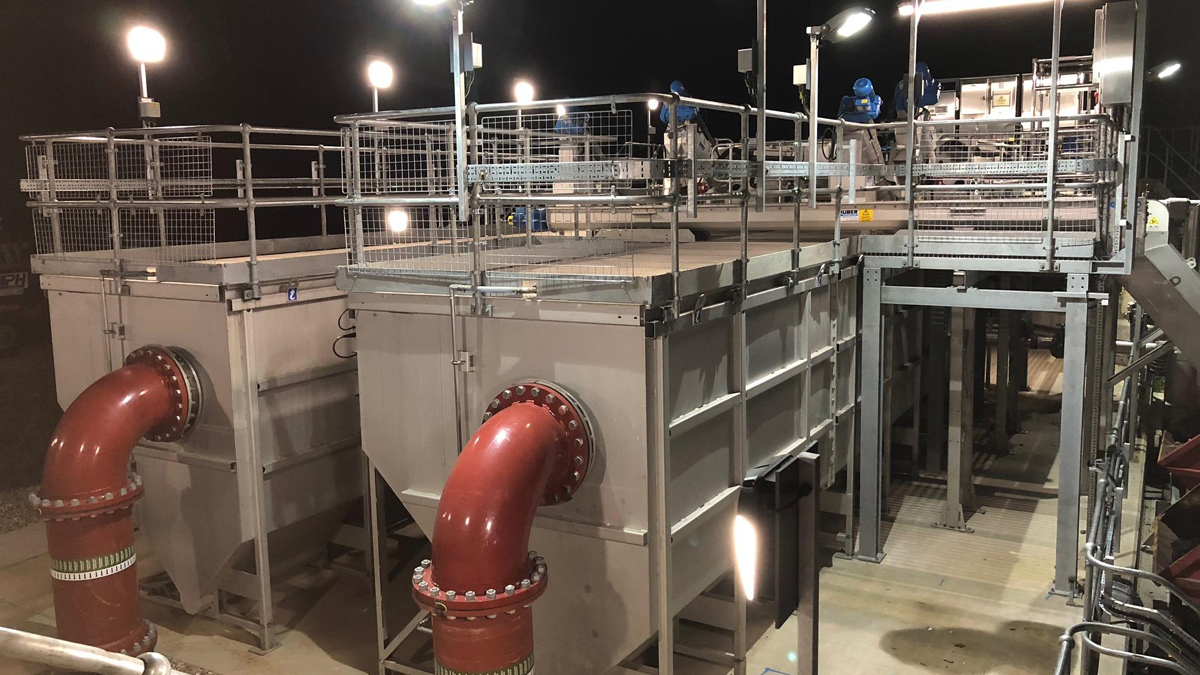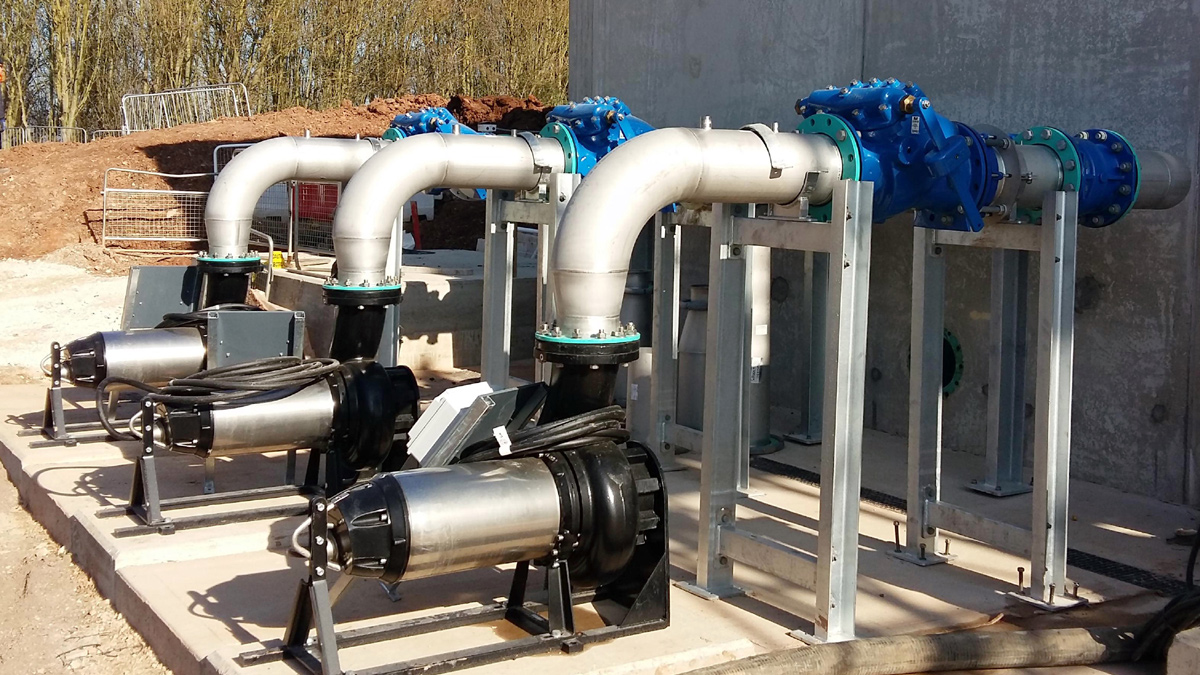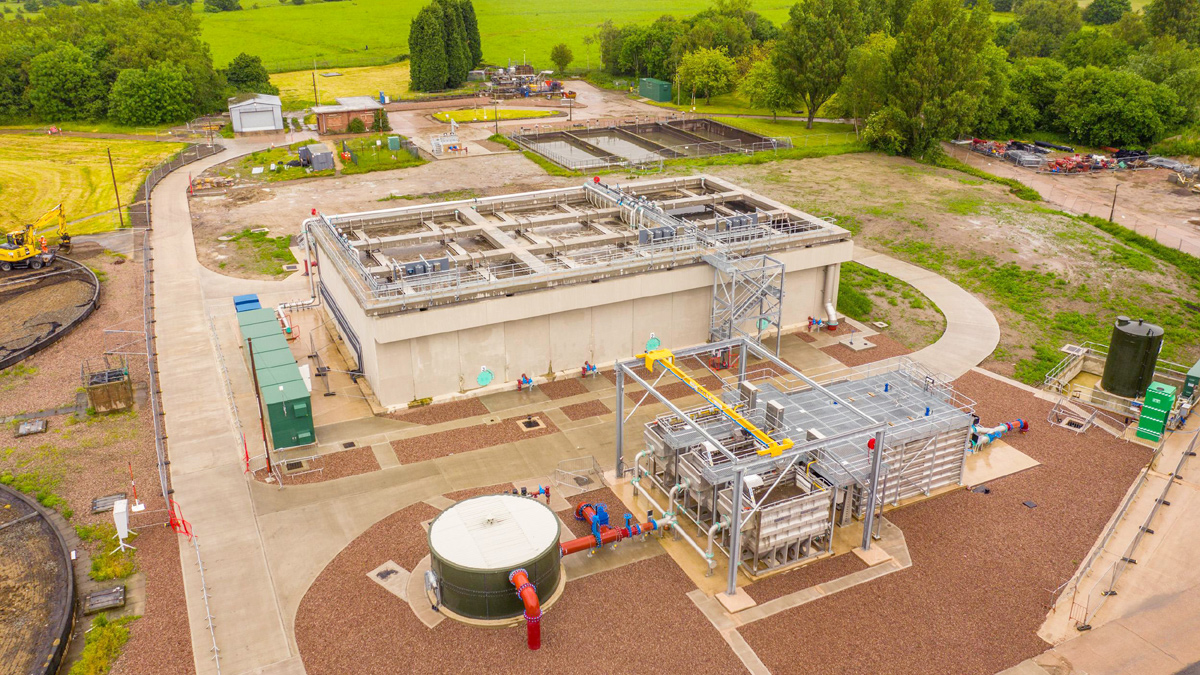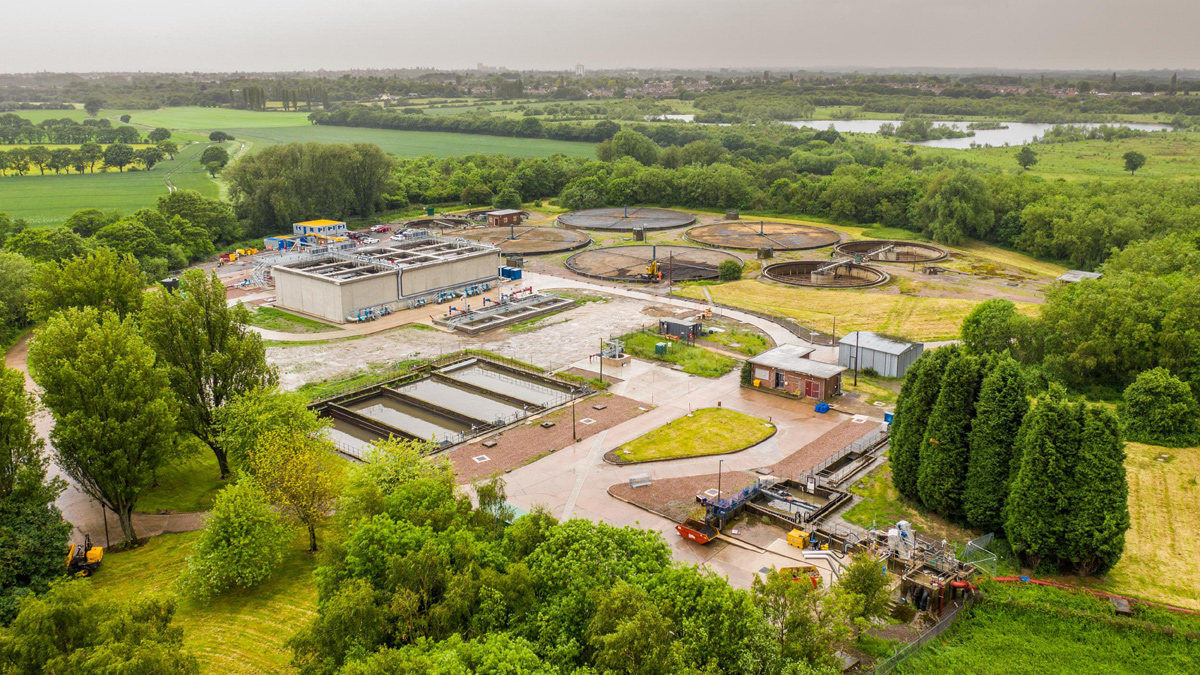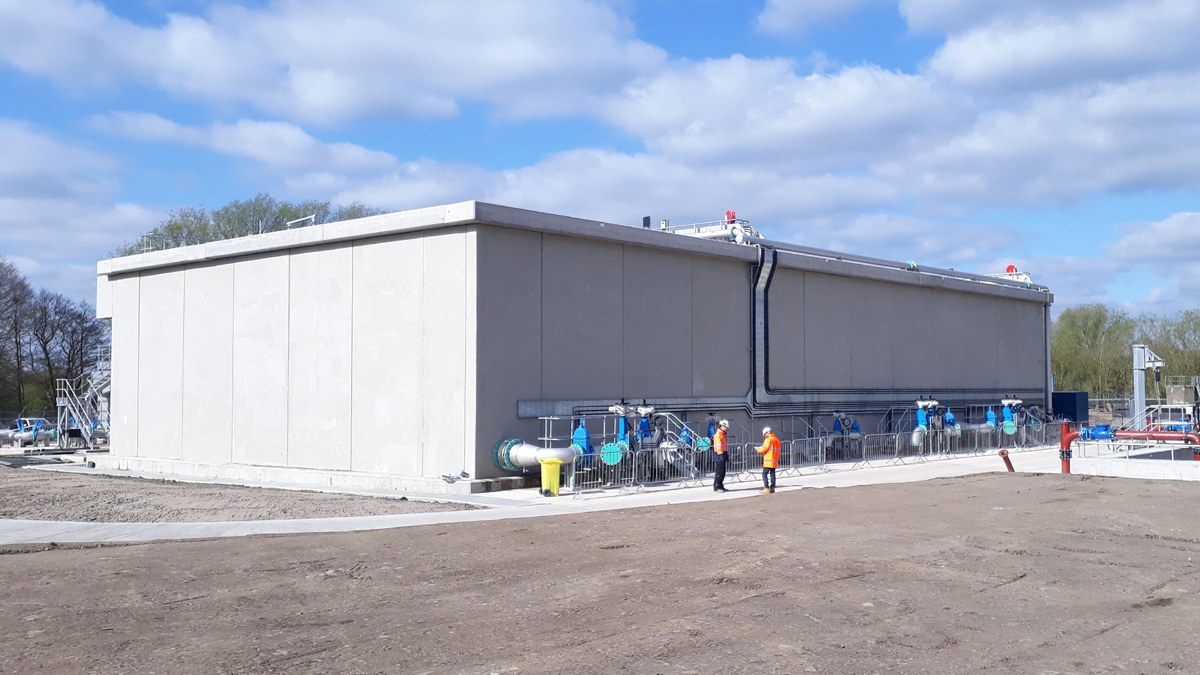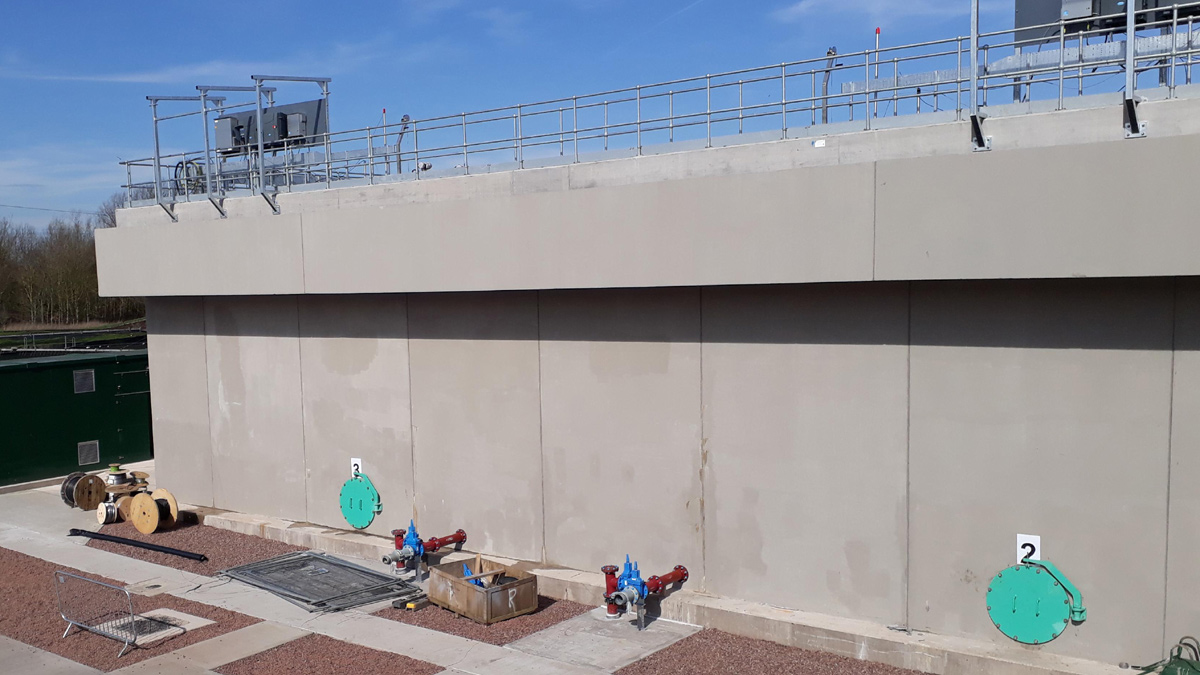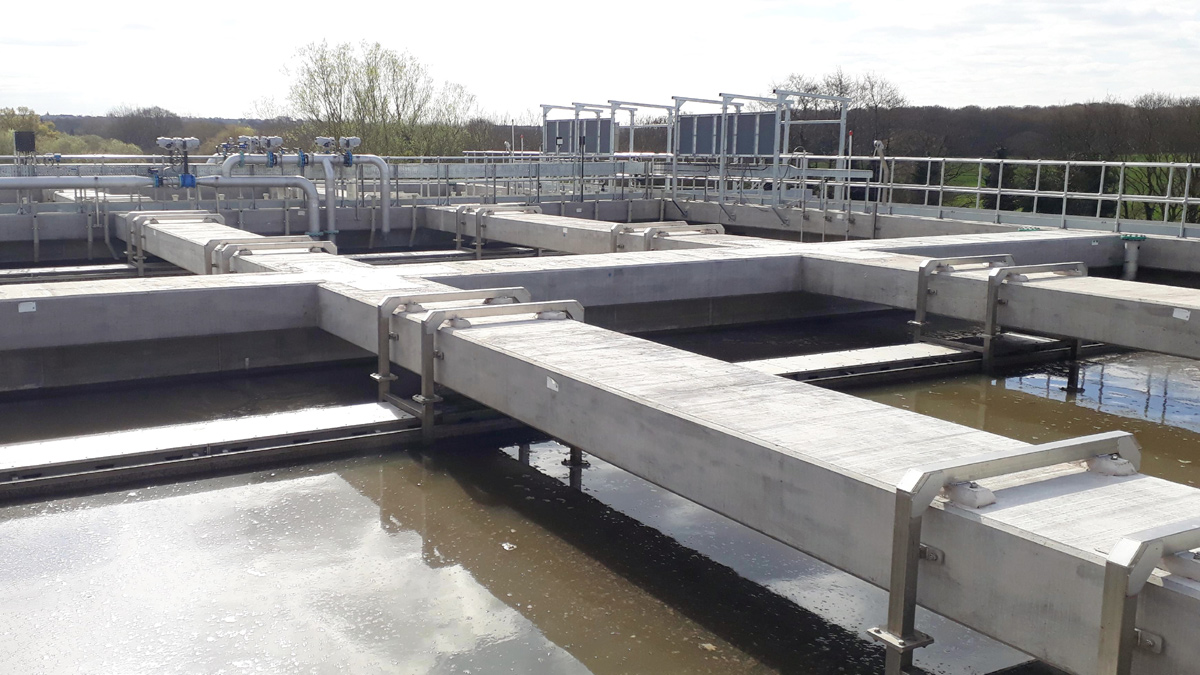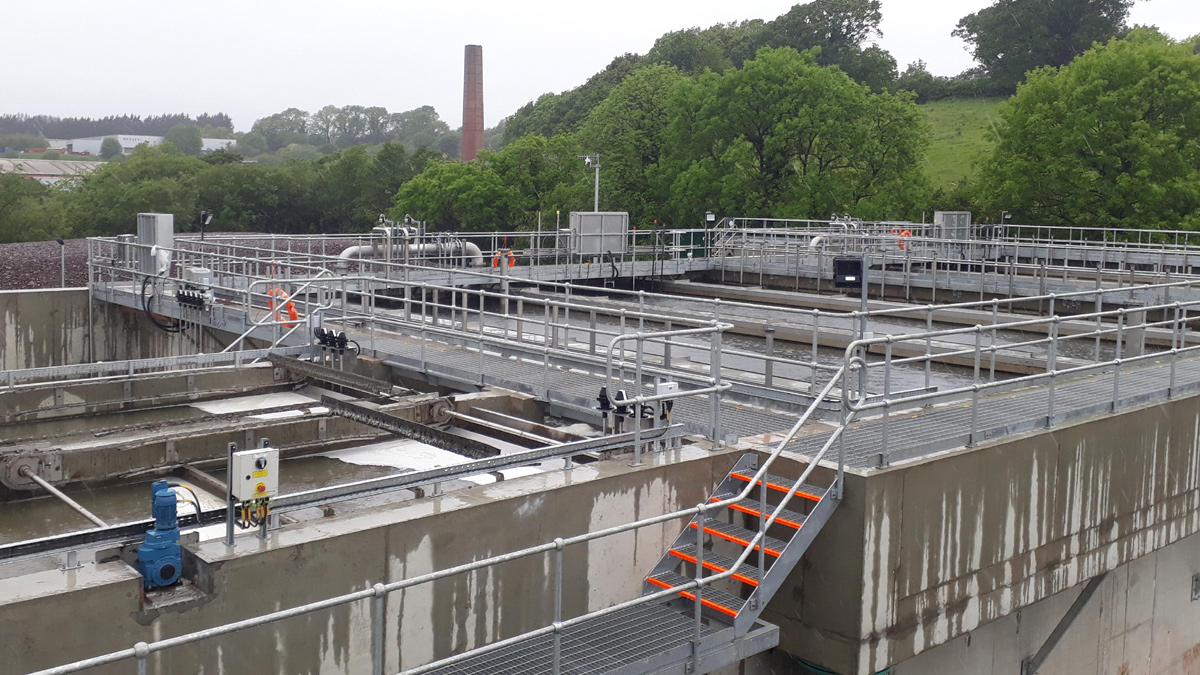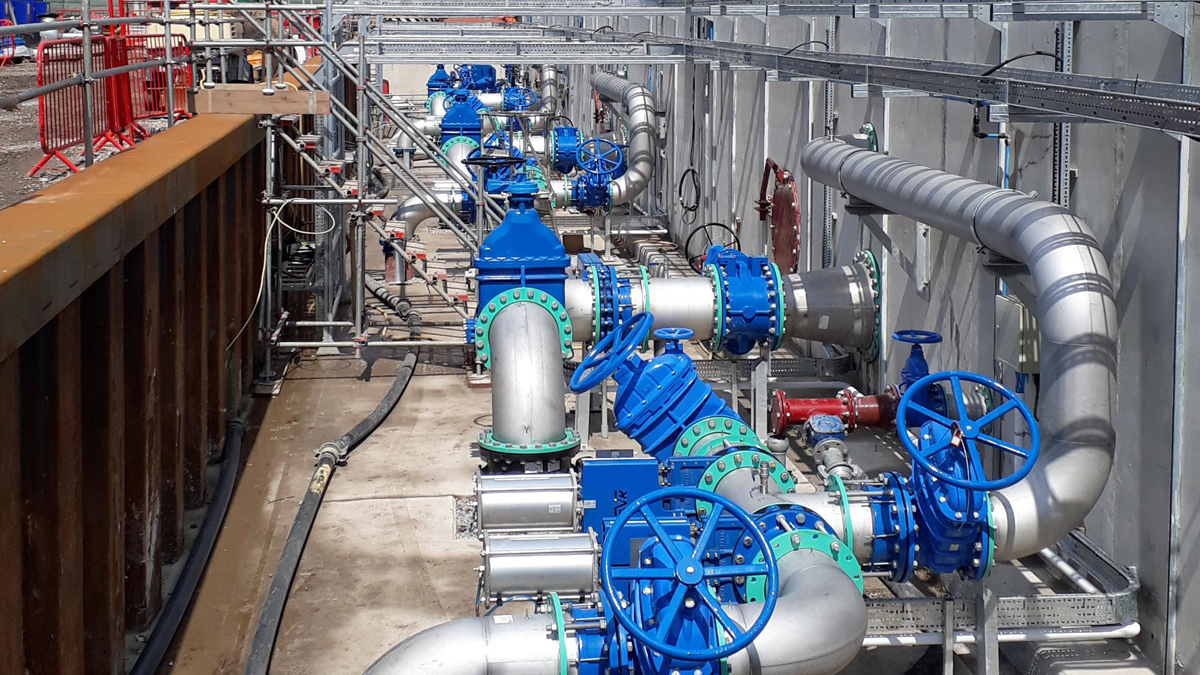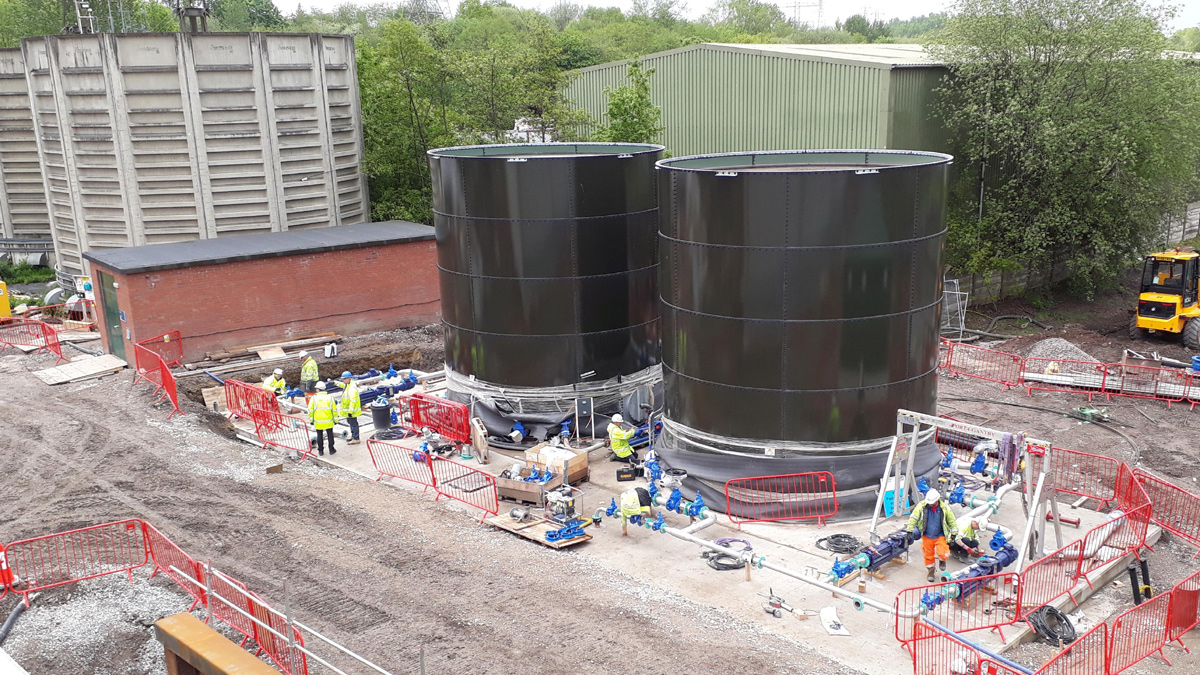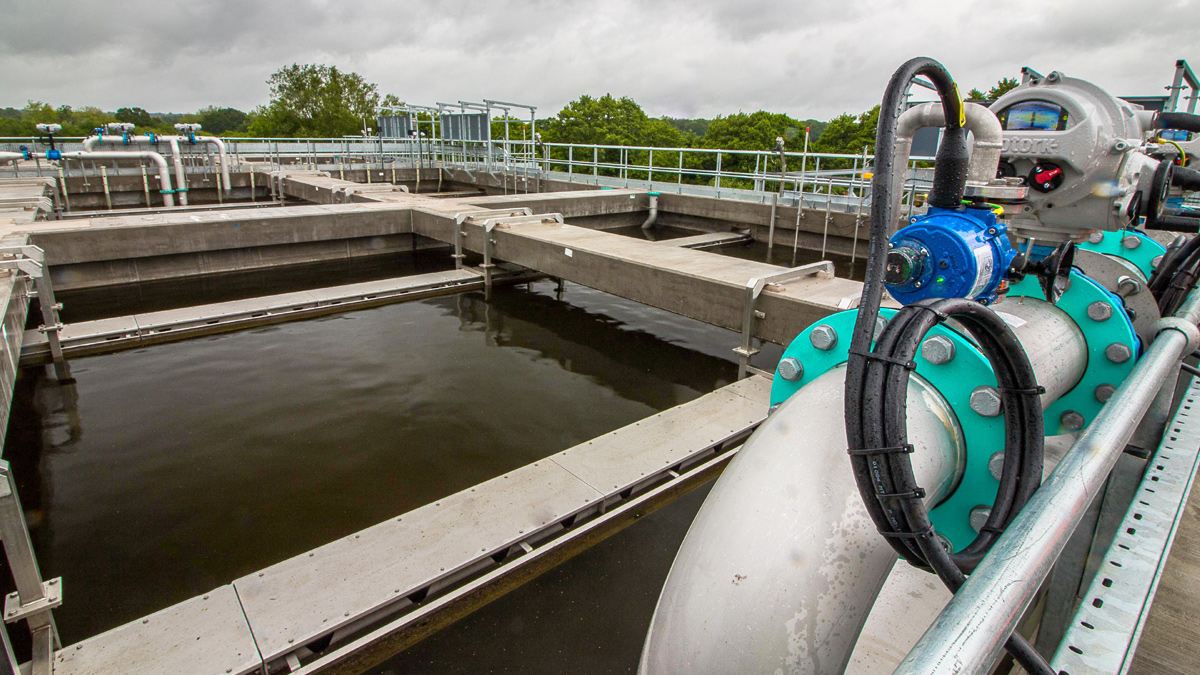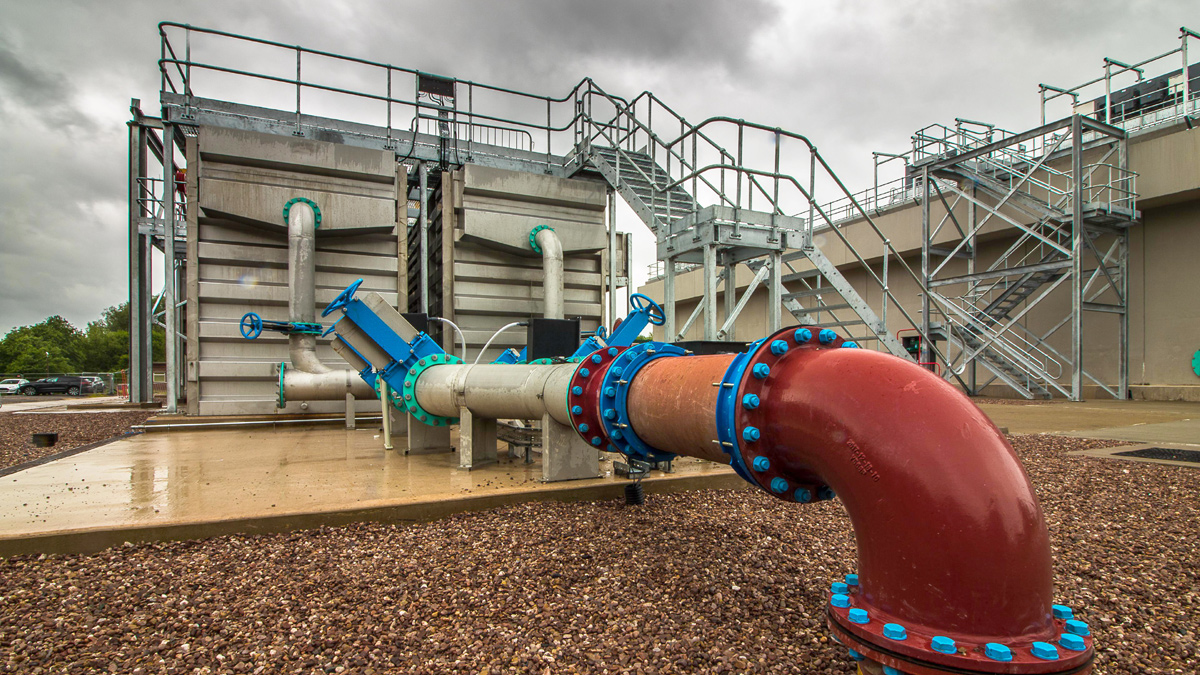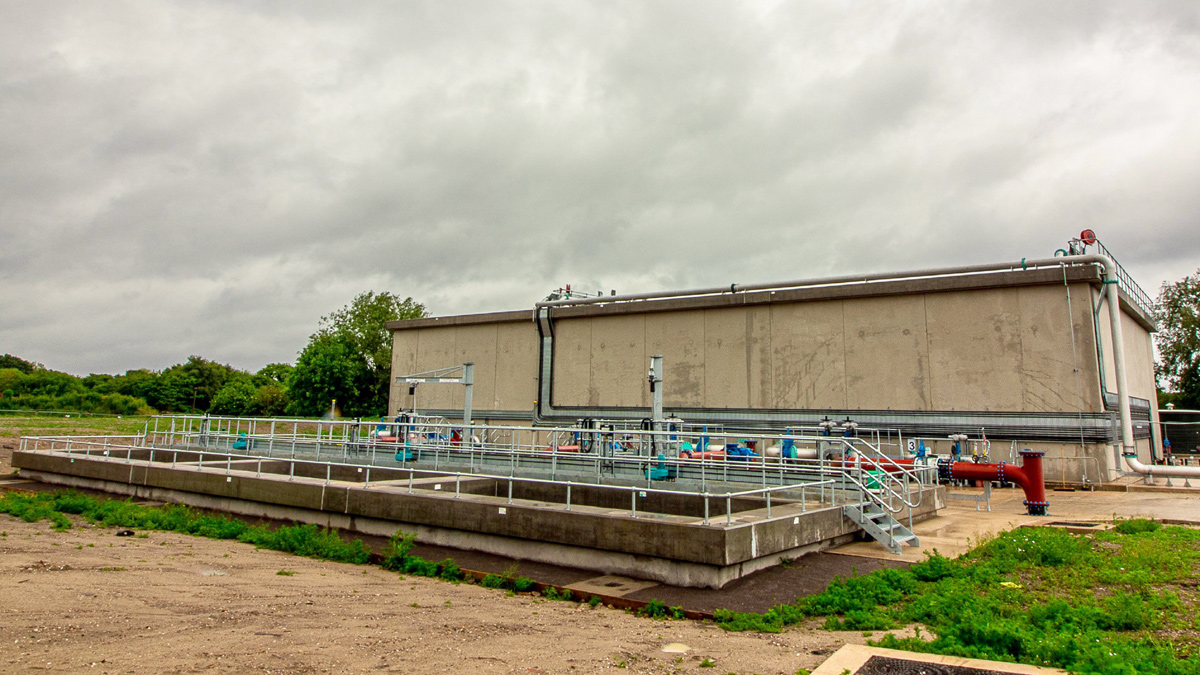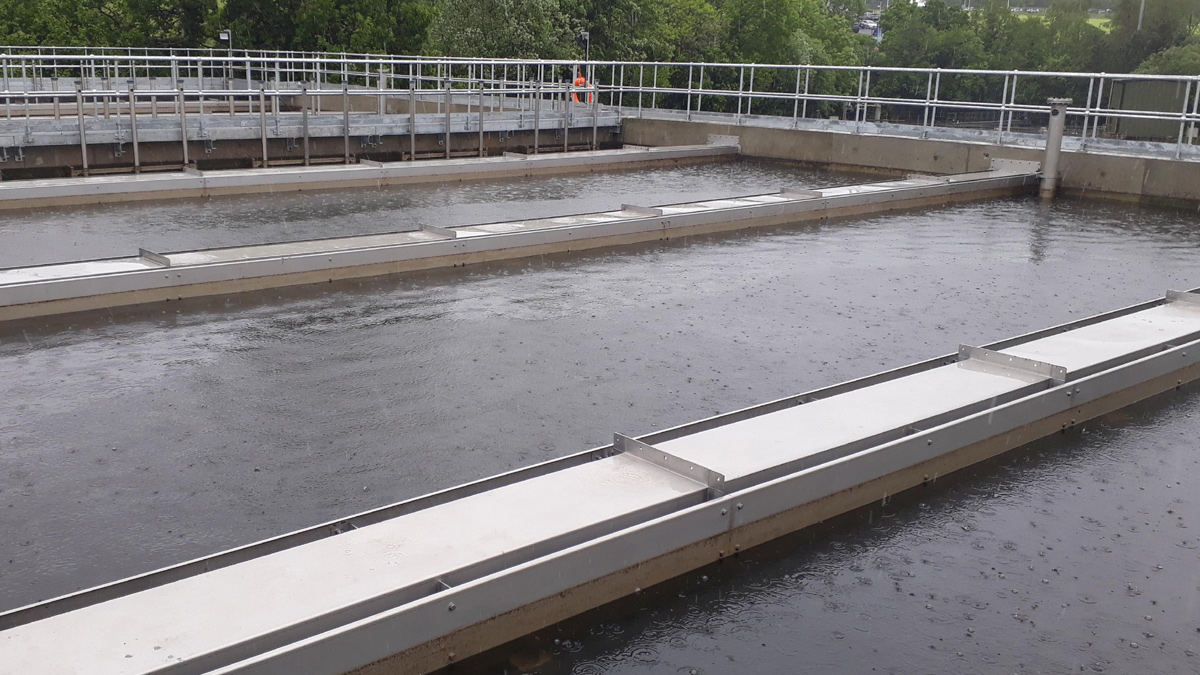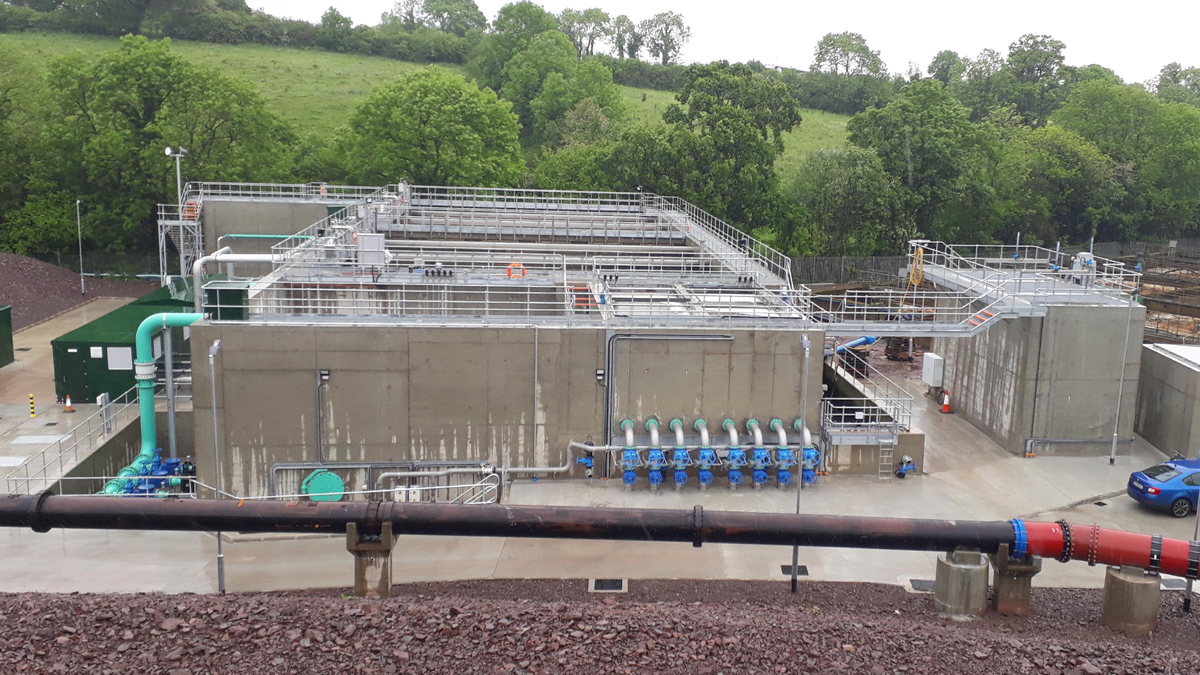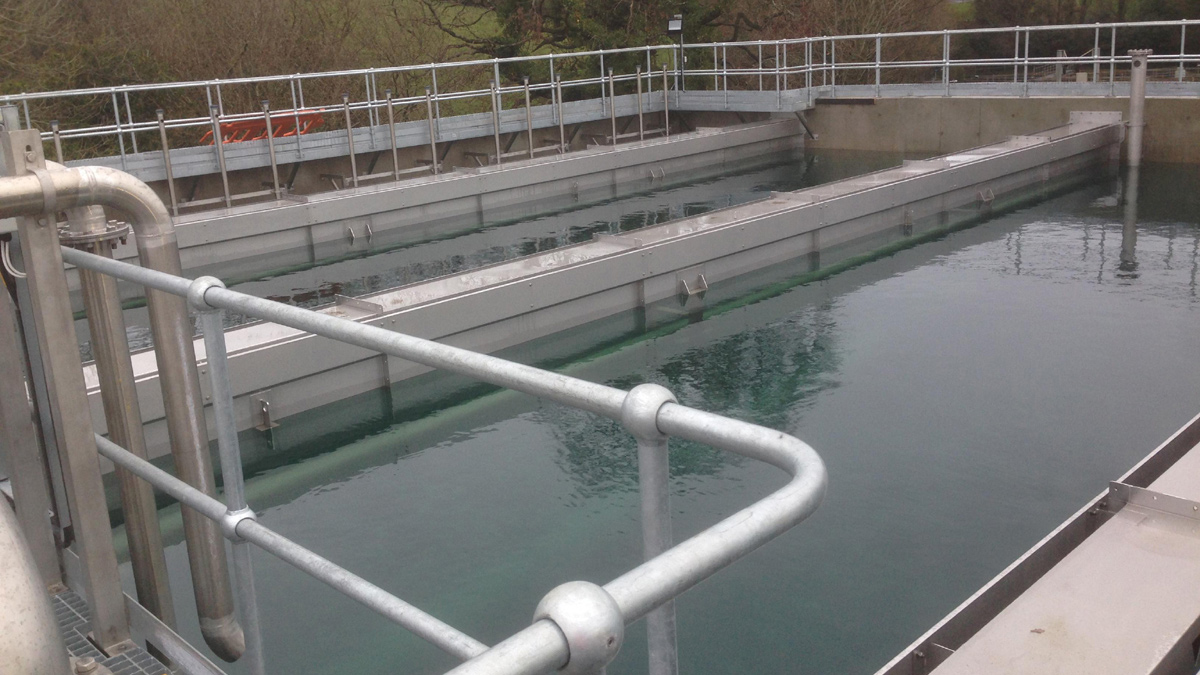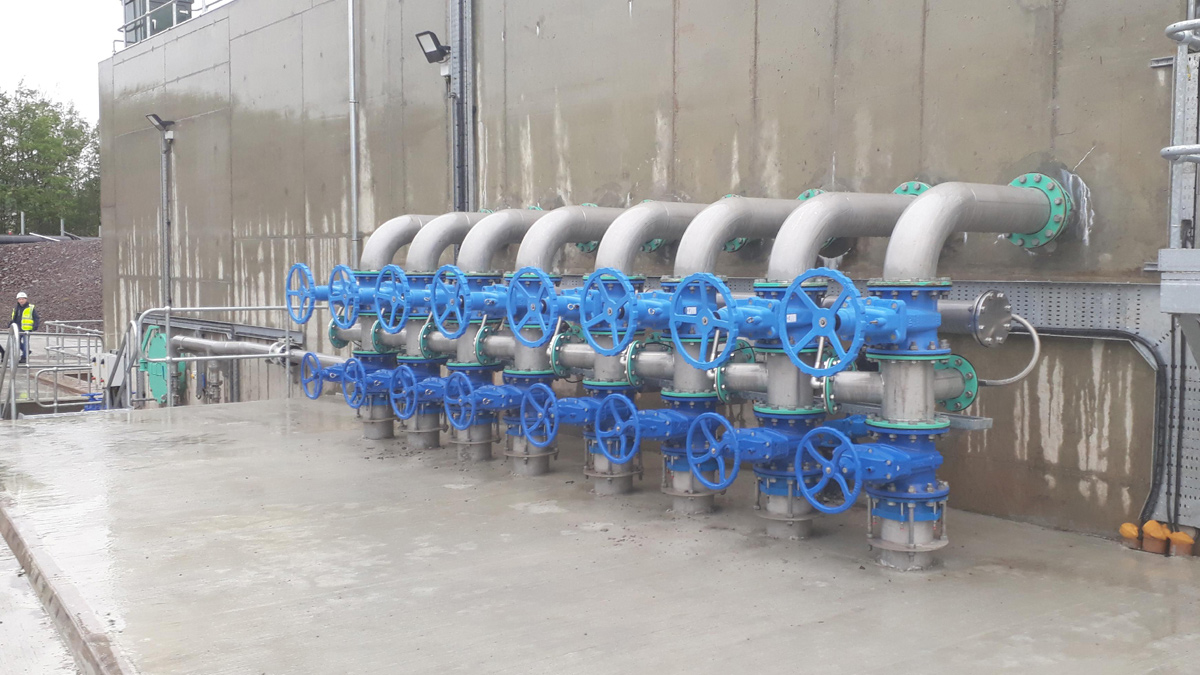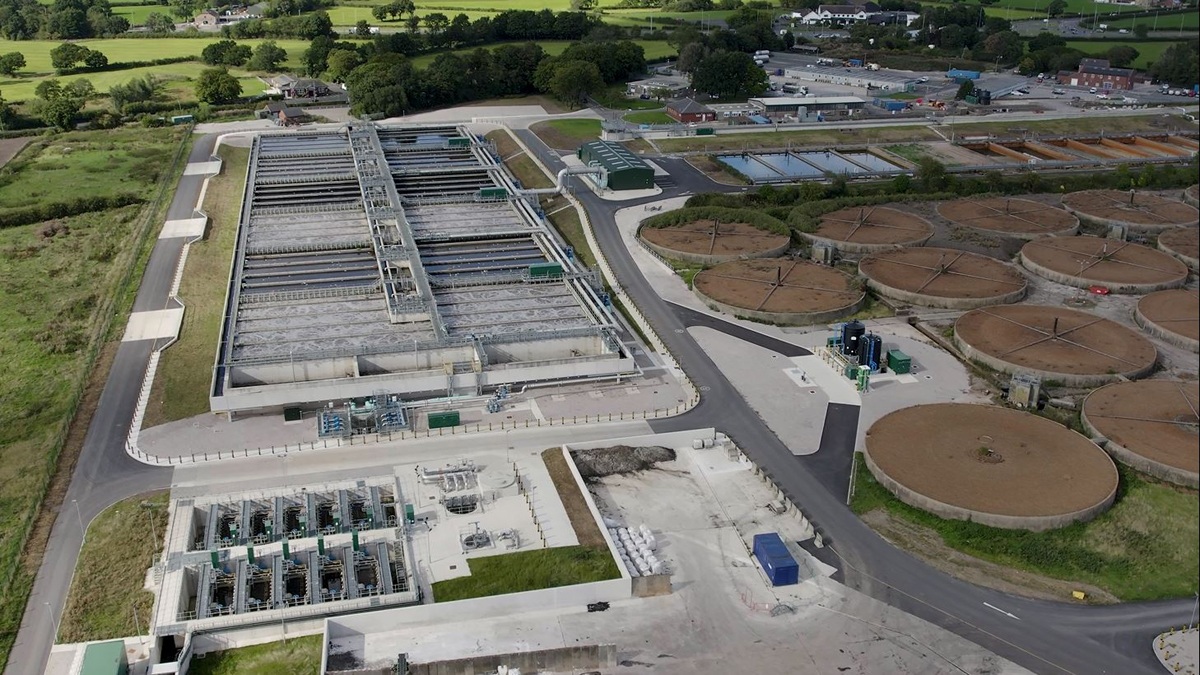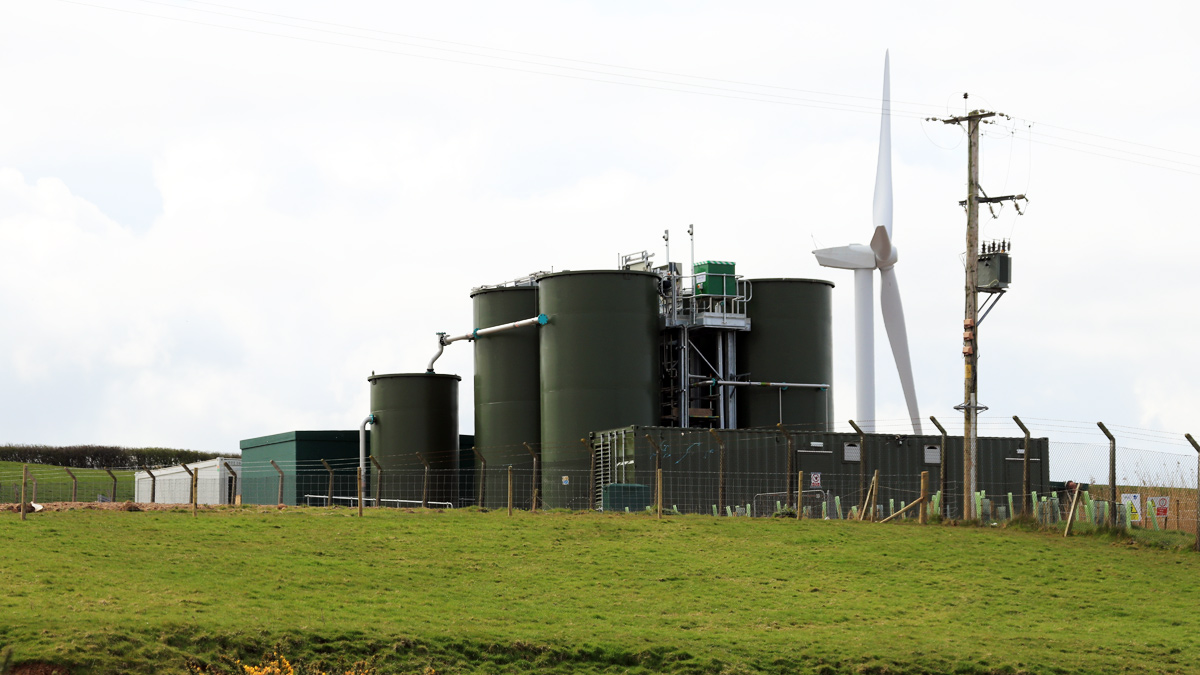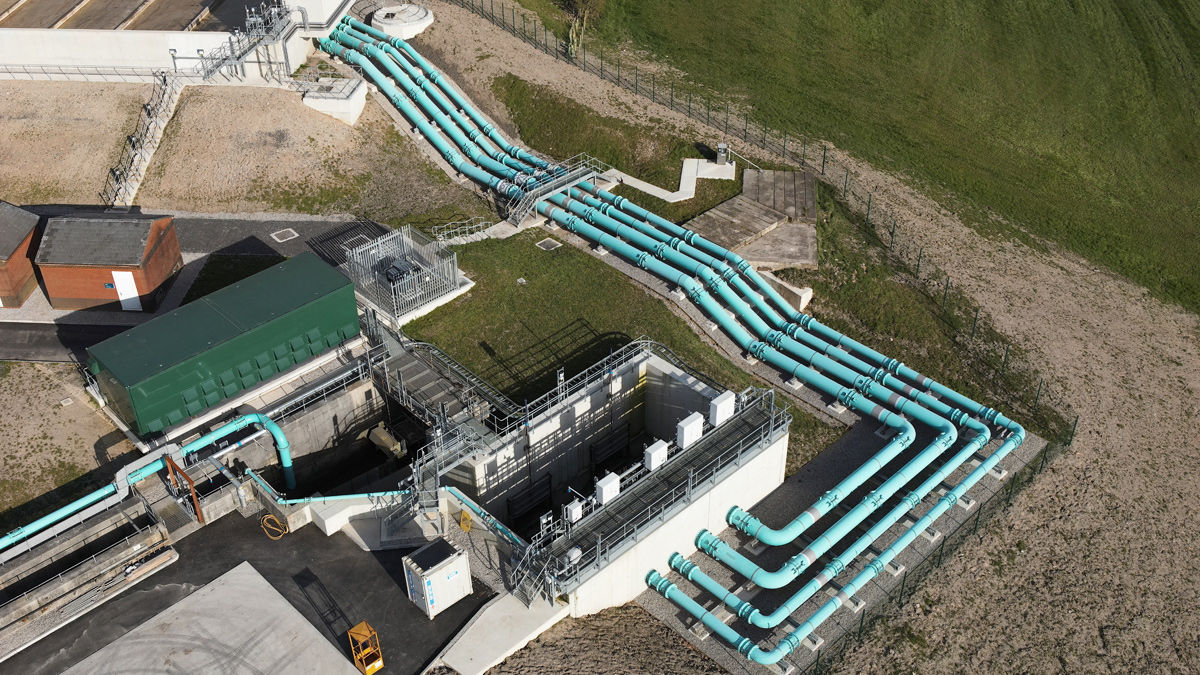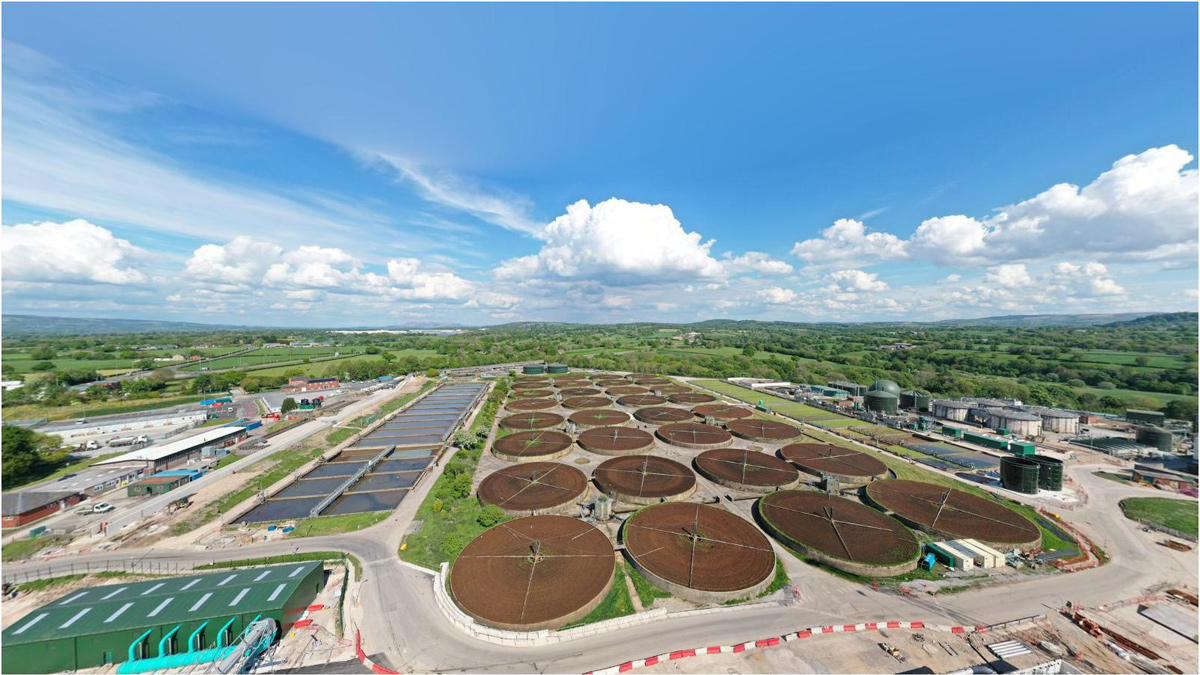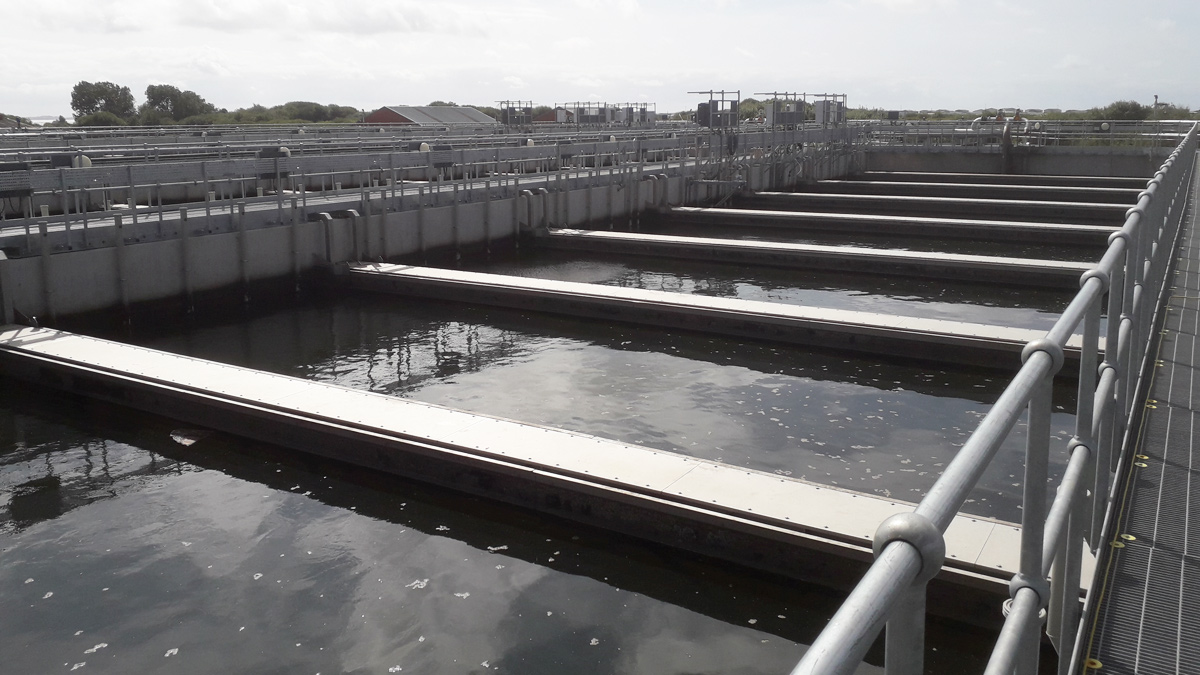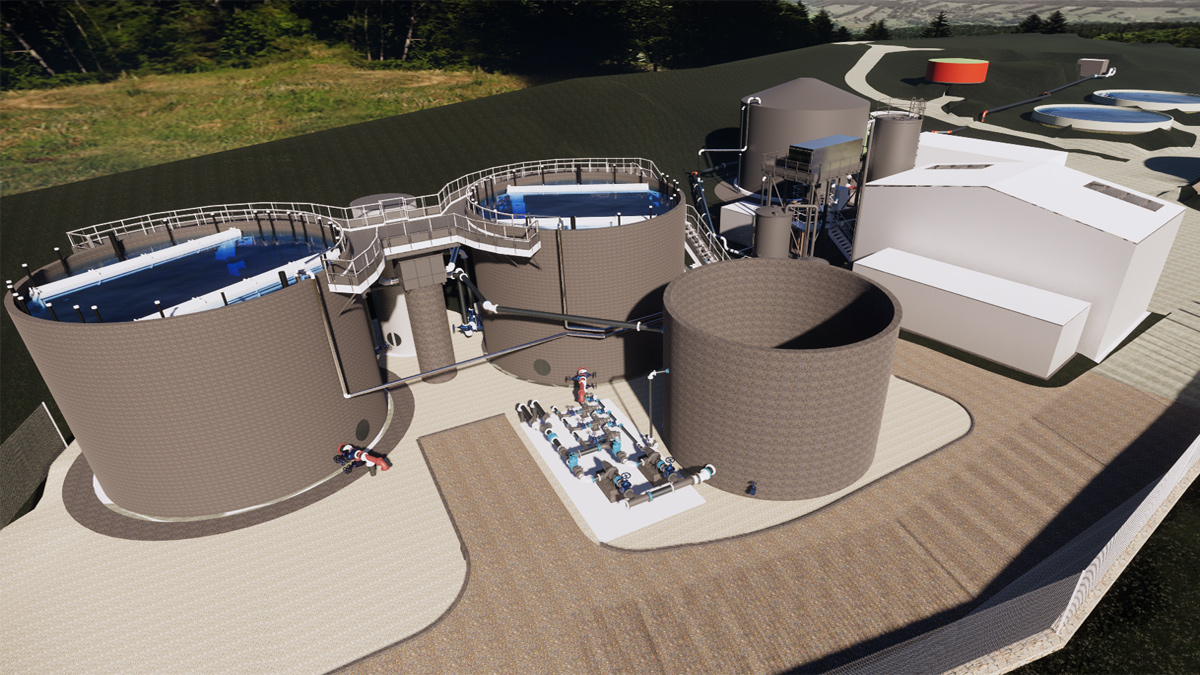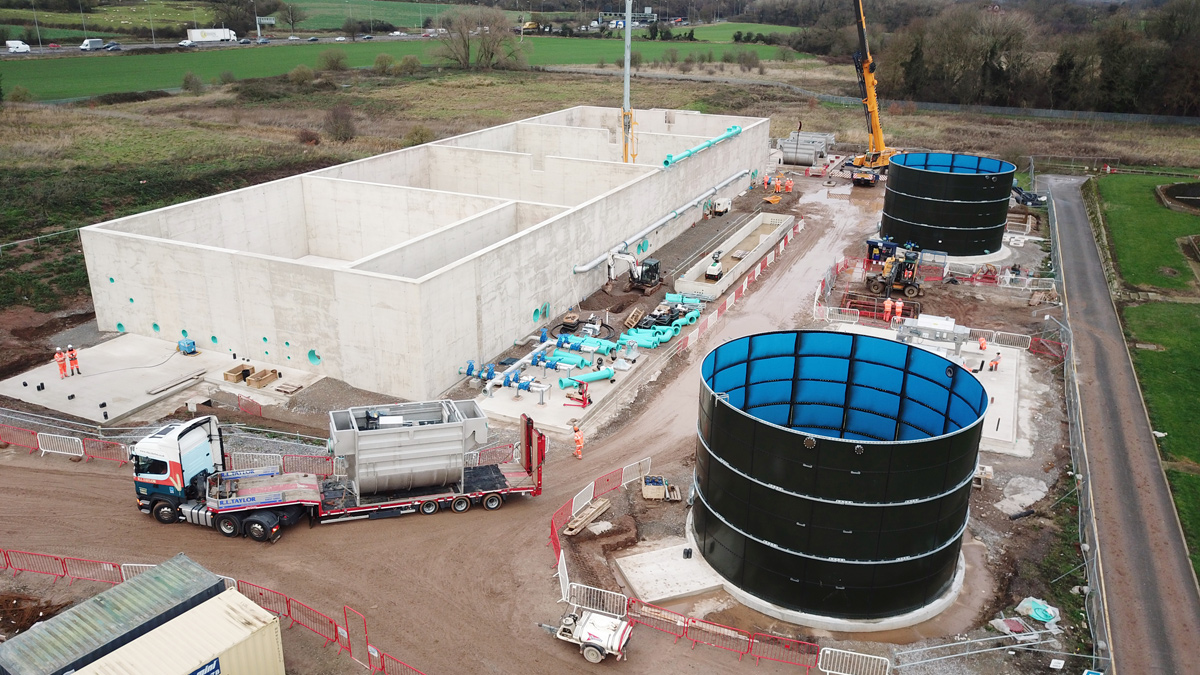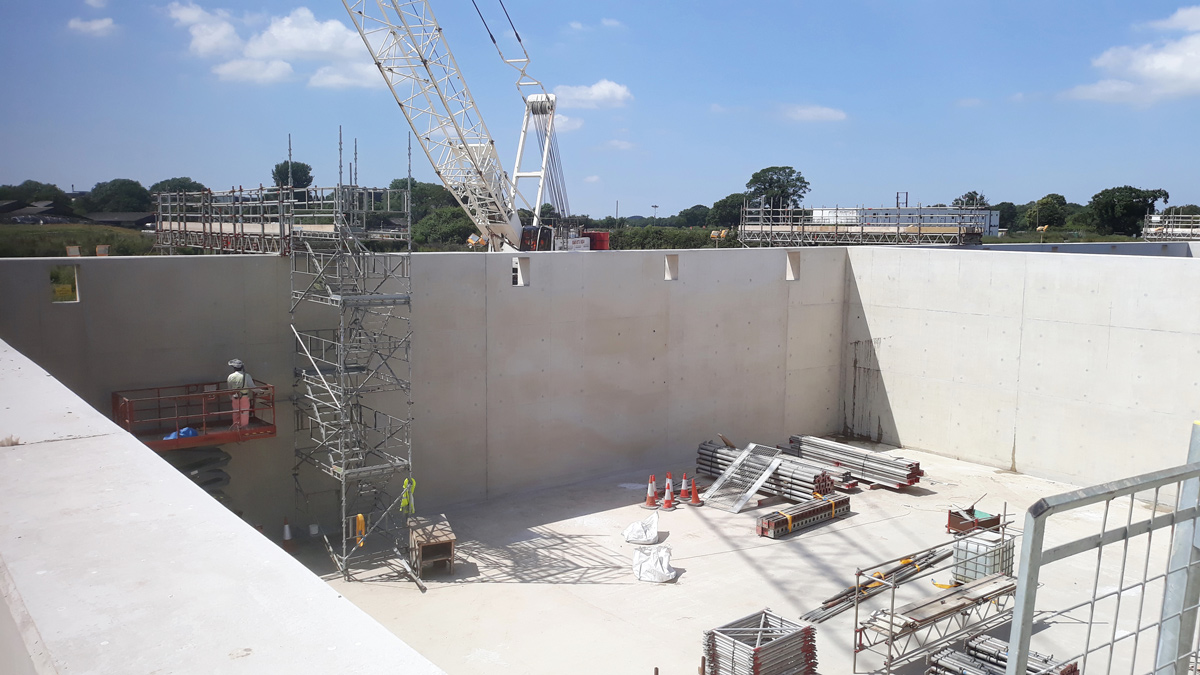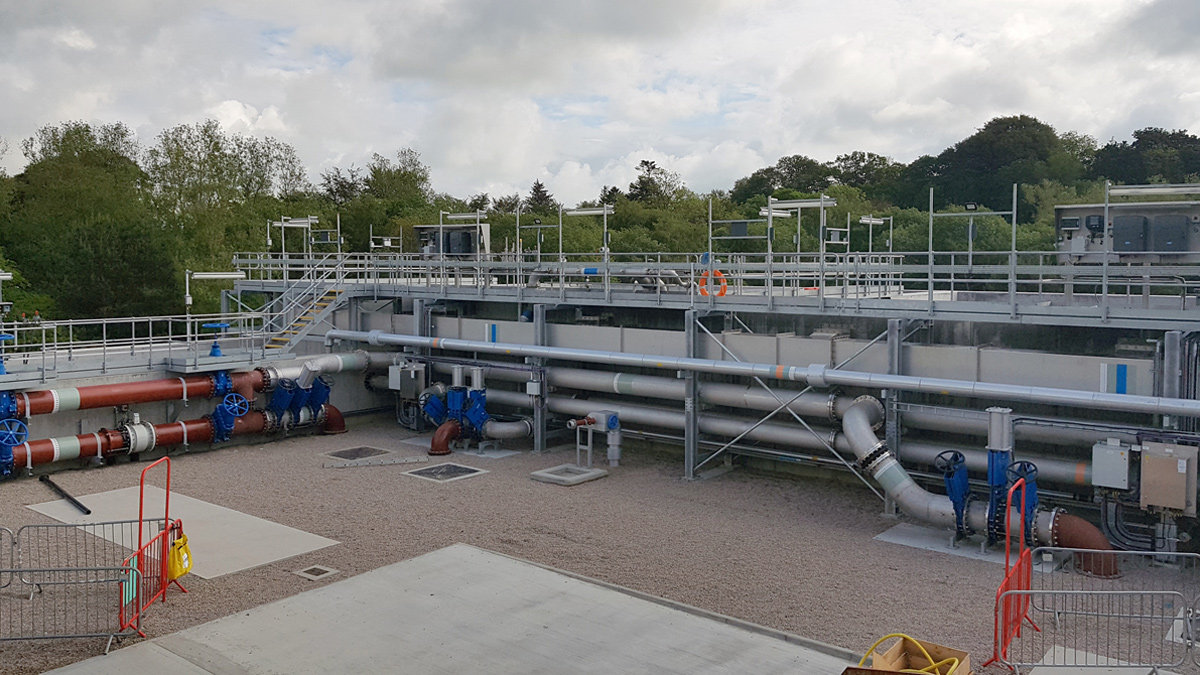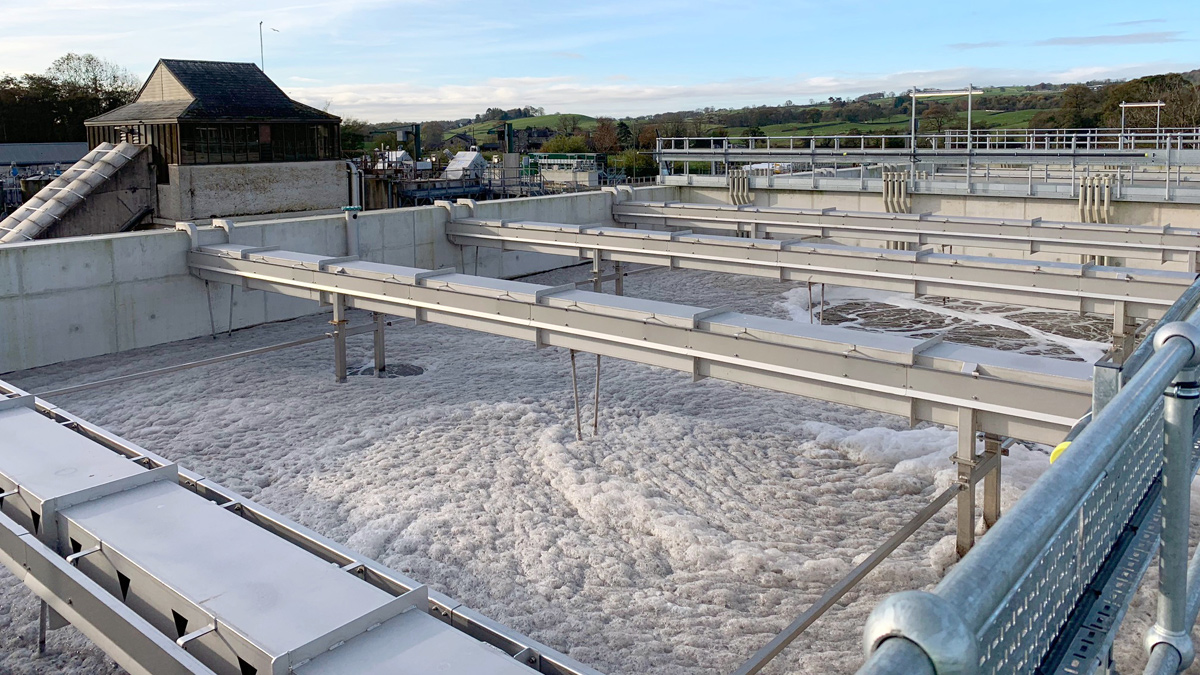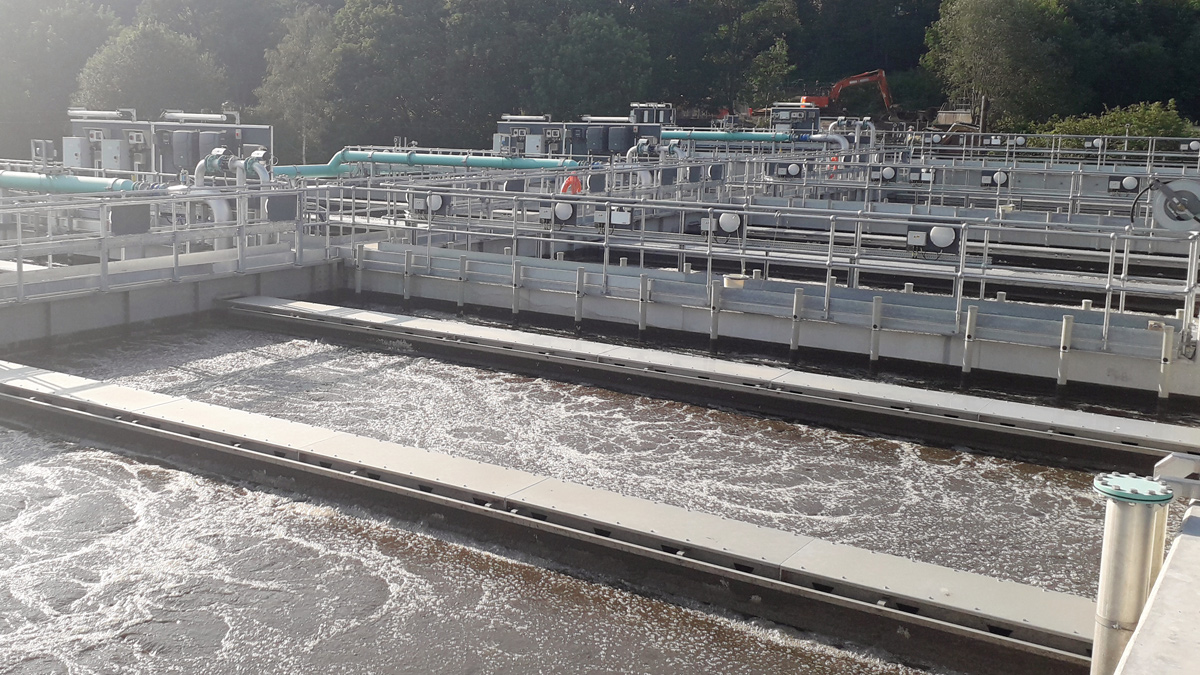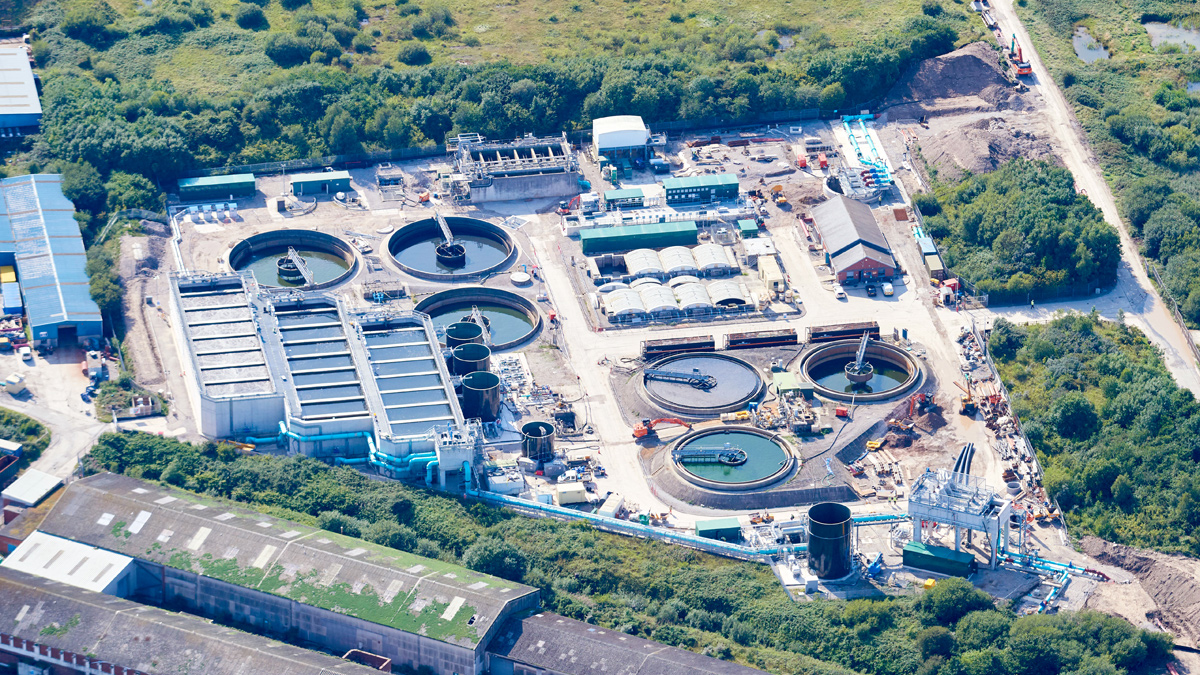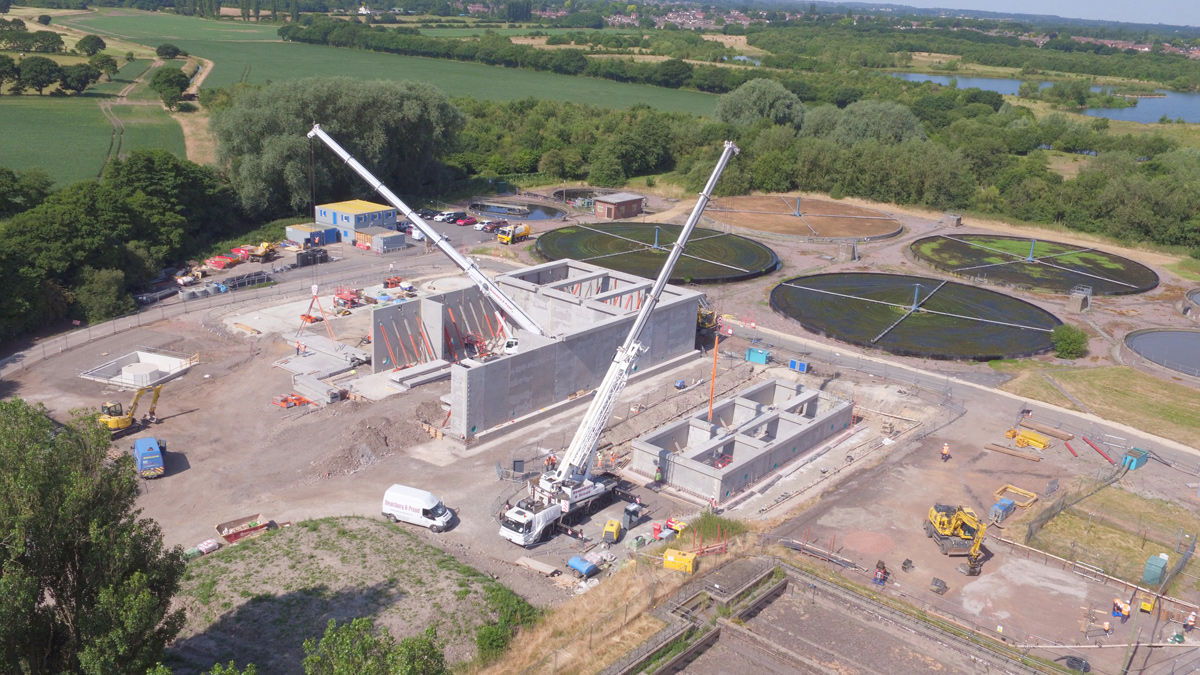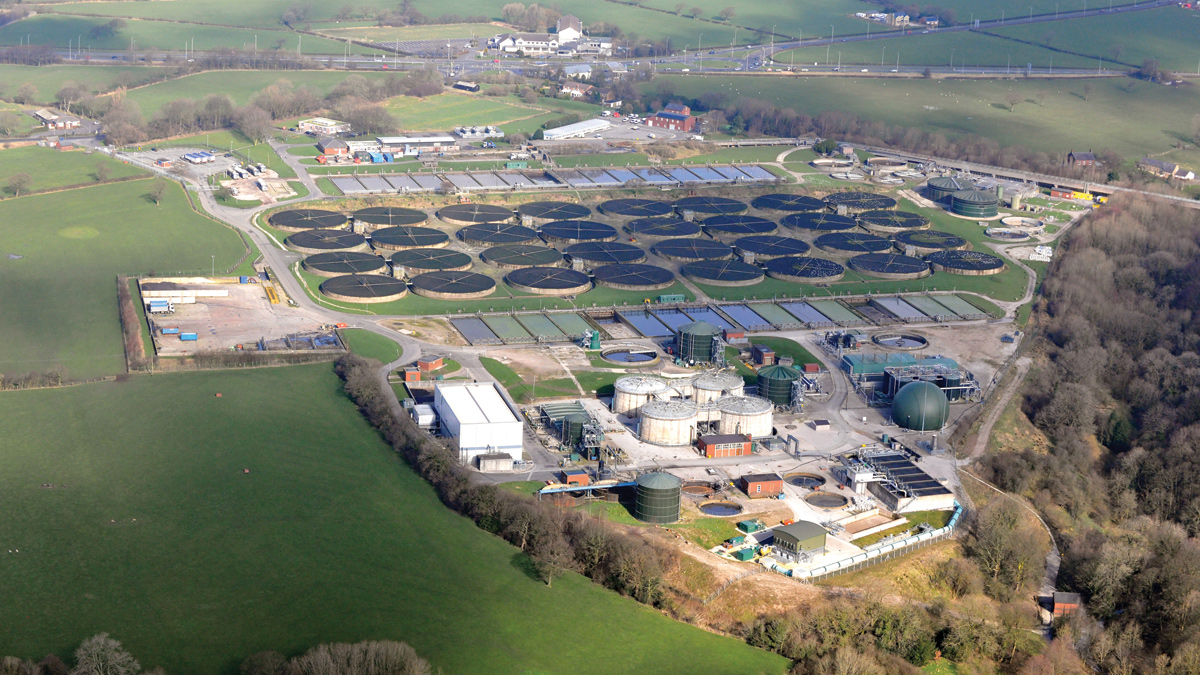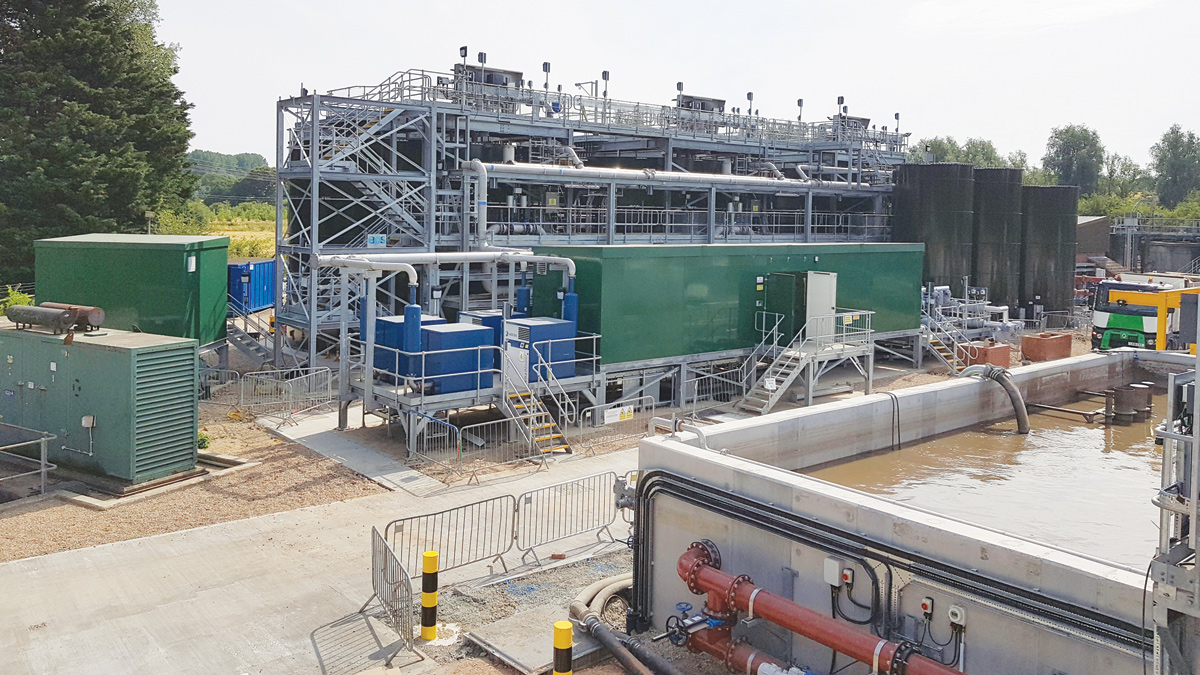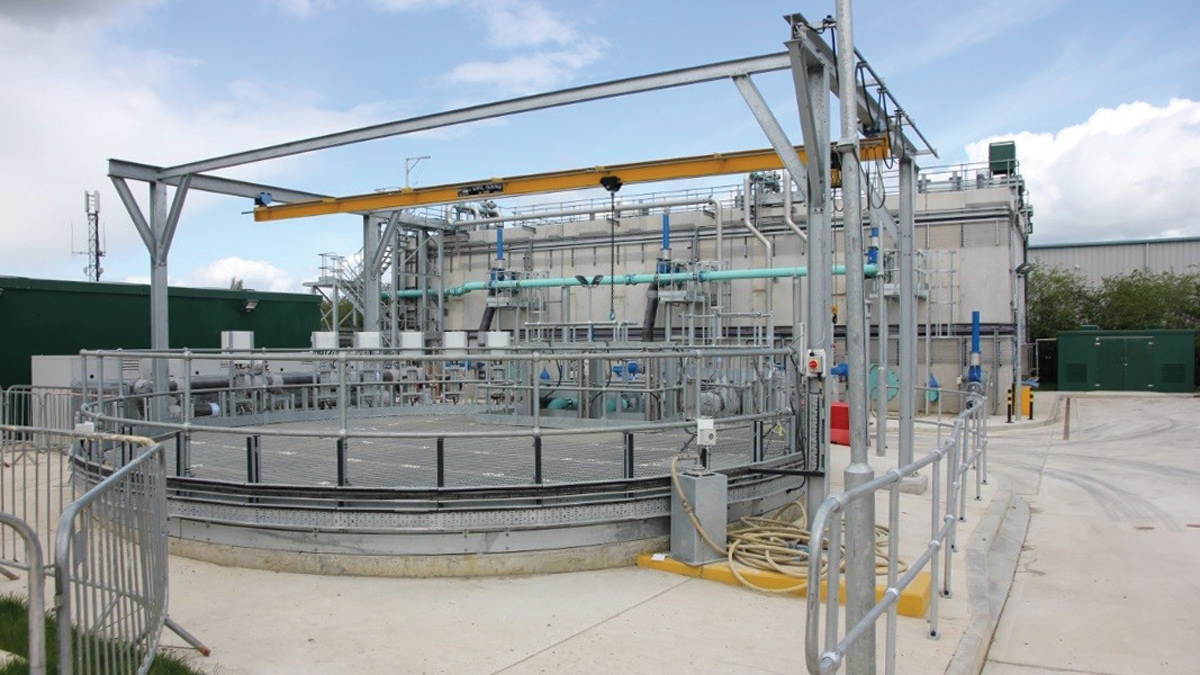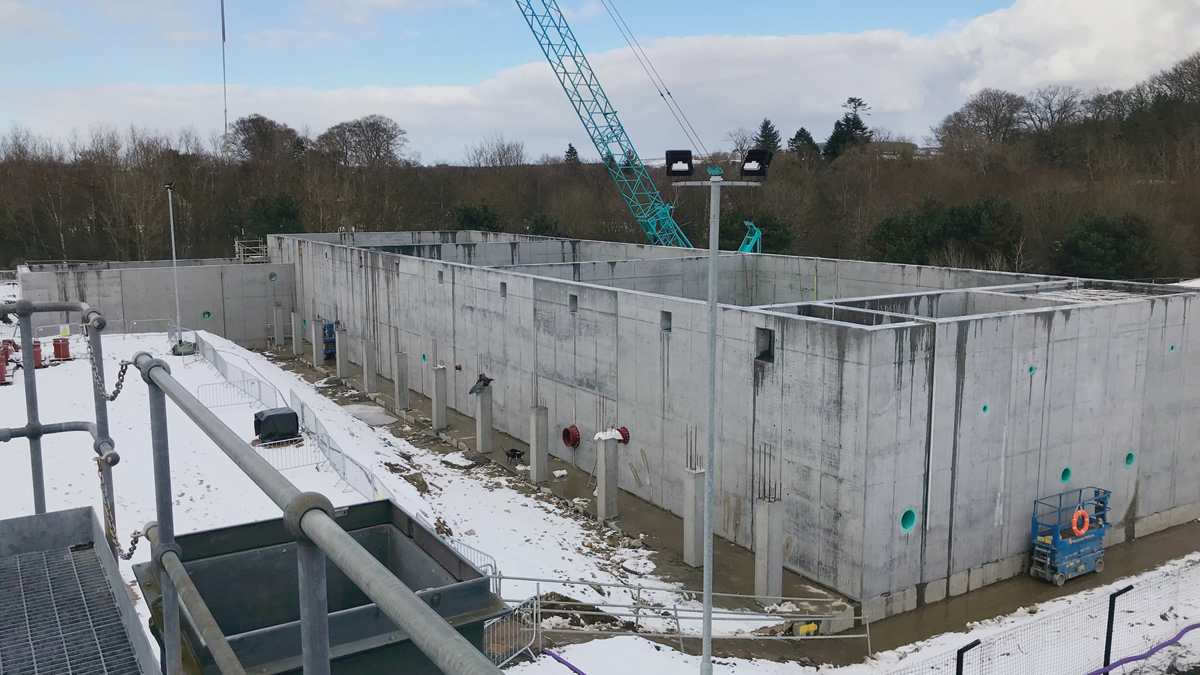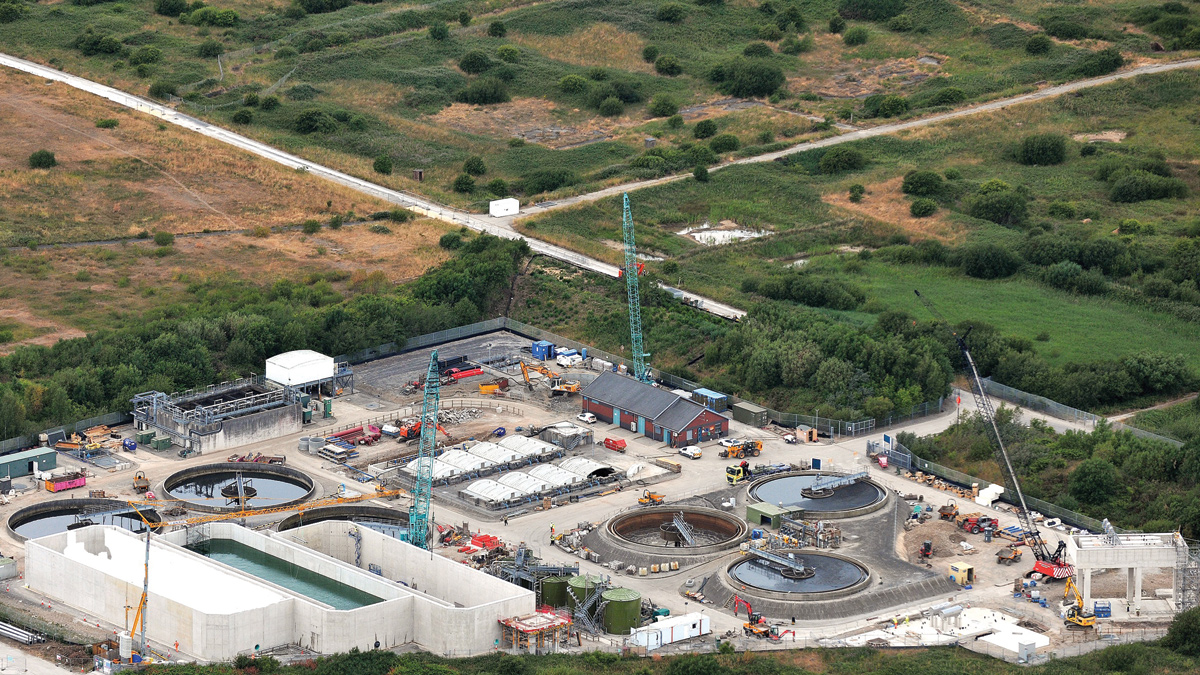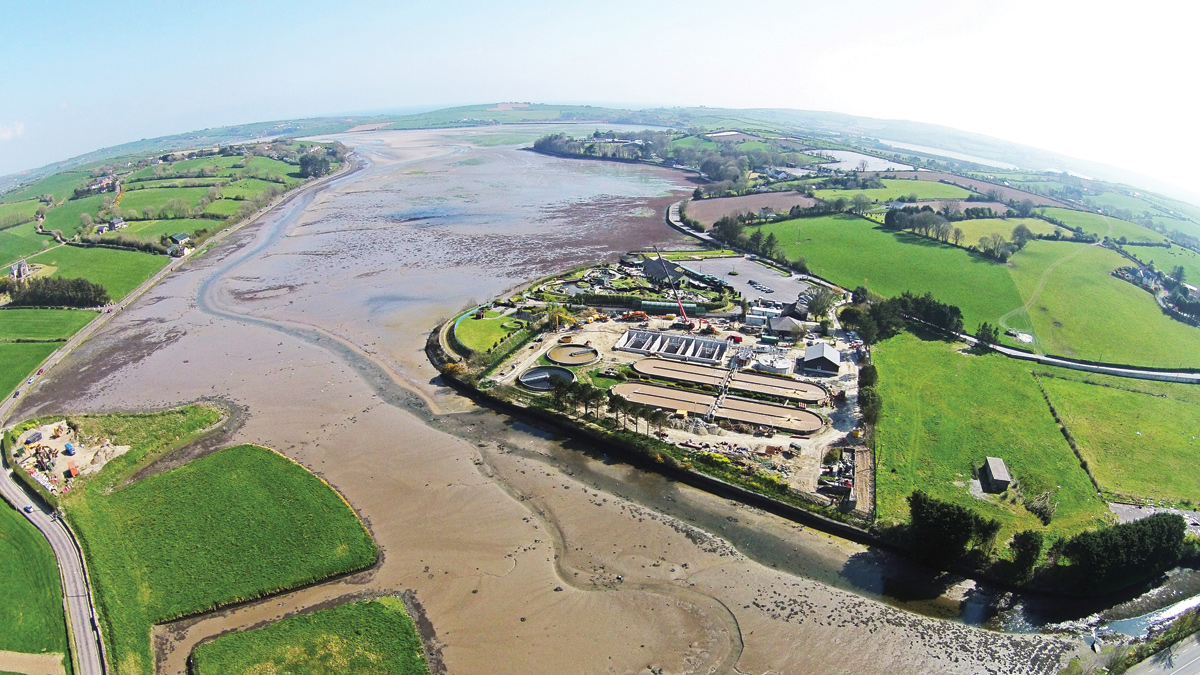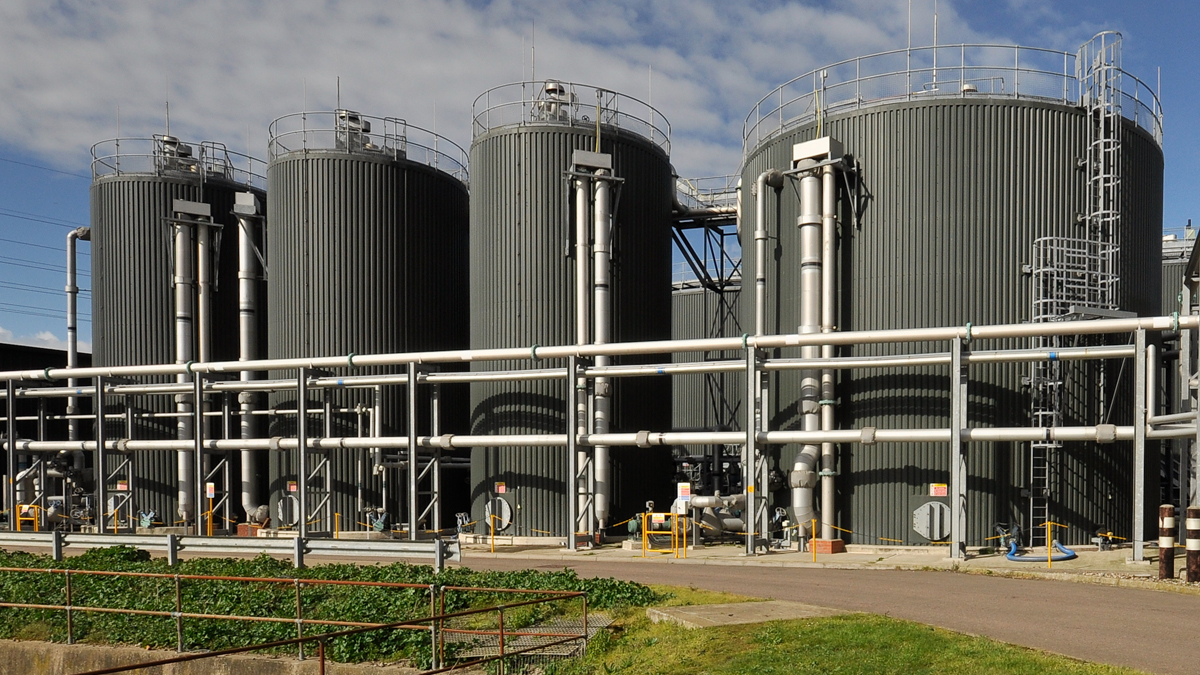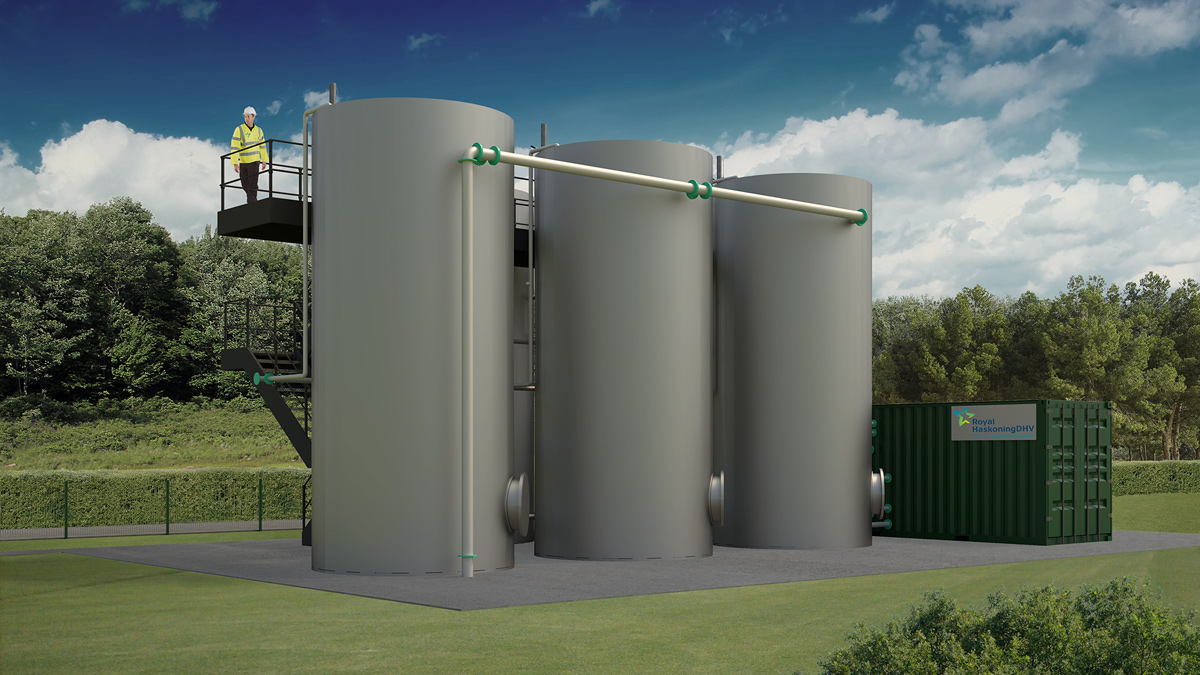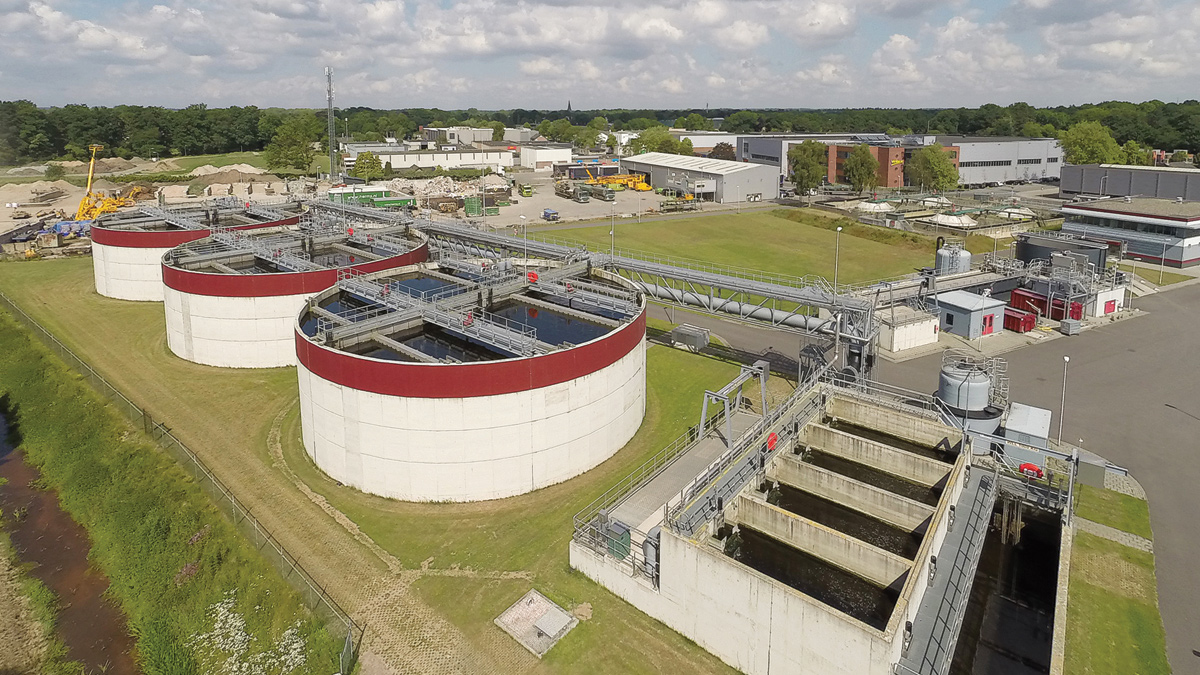Nereda
Kaumera Nereda Gum (2021)
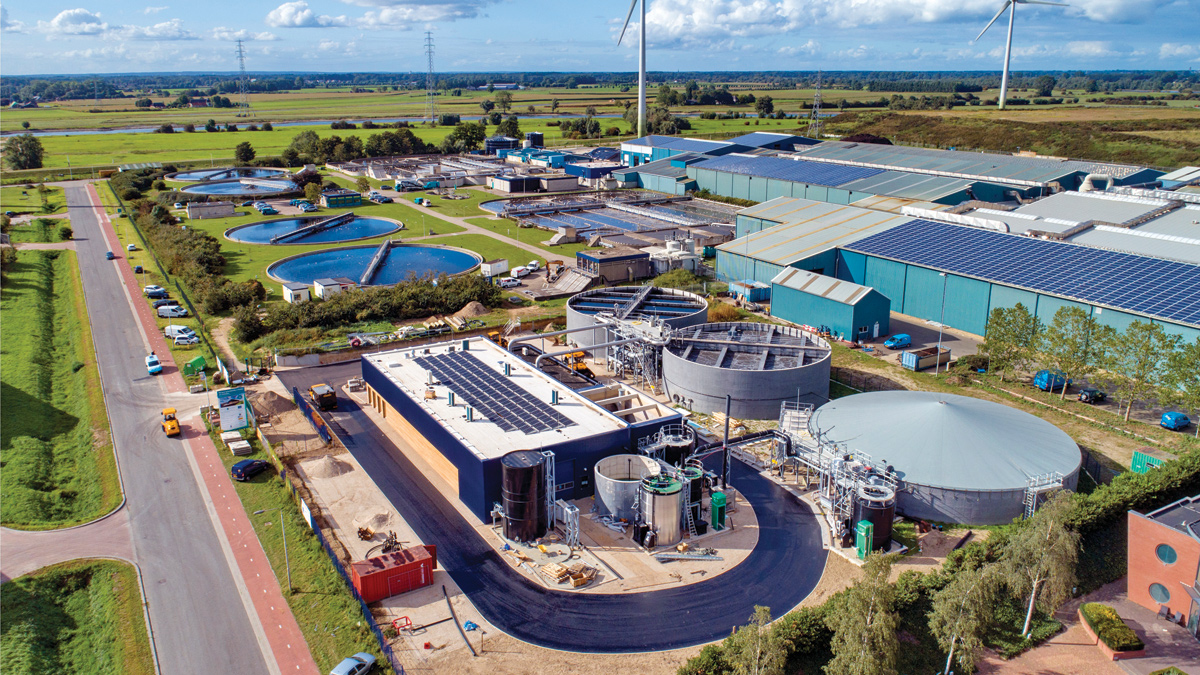
Low footprint Nereda® (circular tanks) and Kaumera installation in the Netherlands - Courtesy of Royal HaskoningDHV
There has been increasing focus on the opportunities to reinvent sewage treatment works as ‘biorefineries of the future’ in order to recover the embedded value within wastewater, move towards zero carbon and integrate water into a future circular economy vision. In wastewater treatment, the ‘biorefinery concept’ has primarily focused on sludge treatment with the UK water companies investing in their anaerobic digestion (AD) asset base to produce renewable energy and support digestate recycling to land. A next generation of cost-effective market-ready technologies to derive high value products from wastewater and sludge, have however remained elusive.
Kaumera Nereda Gum
Kaumera Nereda Gum is a new bio-based raw material that can be readily extracted from the granular sludge in the Nereda treatment process. The ability to extract high yields of a valuable resource from an existing wastewater treatment technology provides a revolutionary opportunity to change the economics of wastewater treatment. This paper considers how Kaumera Nereda Gum can drive forward the circular economy agenda and address the challenges faced by the UK water industry in the coming AMP7 investment period (2020-2025).
Sewage treatment and the circular economy
The circular economy, of which water is a key factor, is widely recognised as being essential for a sustainable planet. The natural water cycle is inherently circular but human interventions break this cycle, requiring multiple loops (i.e. energy, resource availability, nutrients, carbon) to be closed to ensure circularity and hence sustainability. The circular economy system (figure 1 – below) typically expects production/extraction of bio-products from organic wastes to be an intervention of greater net benefit than energy recovery. Cost effective technologies to generate new products from organic wastes, prior to energy recovery of residuals, should always be a more beneficial financial and environmental intervention in developing a circular economy.
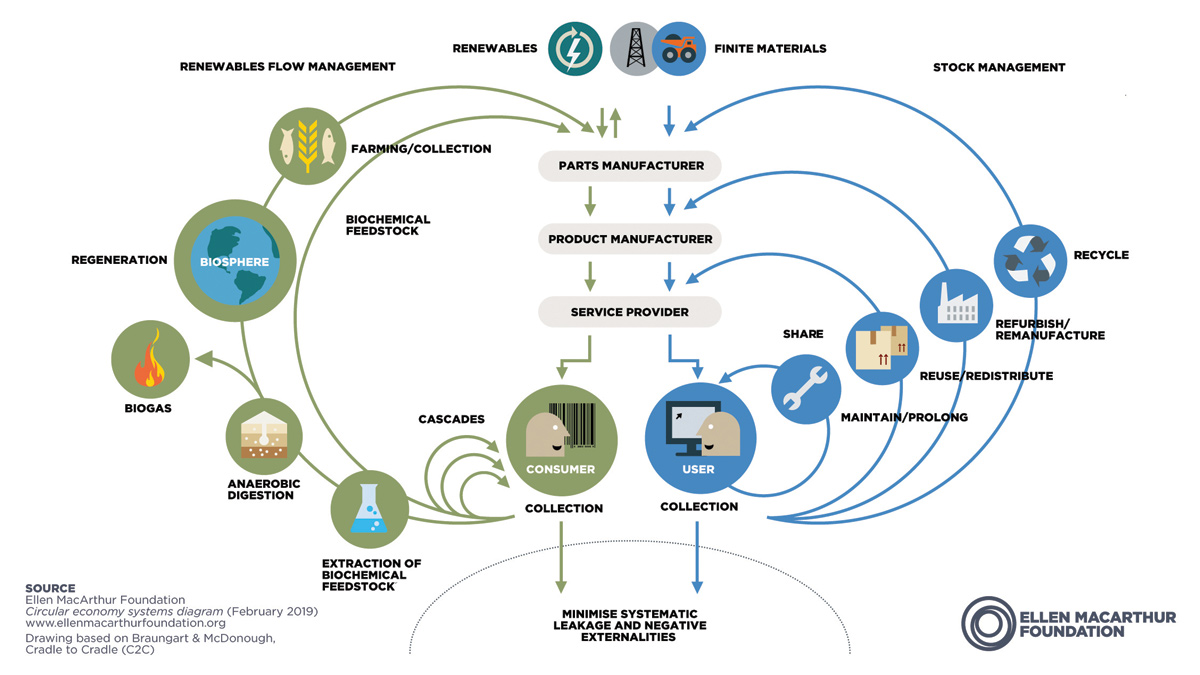
Figure 1: The circular economy (source: ellenmacarthurfoundation.org) – Courtesy of Royal HaskoningDHV
The embedded value in sewage is well documented and UK water companies have invested heavily in expanding and enhancing their anaerobic digestion asset base to recover organic energy (in the form of biogas) and nutrients (recovered in mineral form or recycled within the resulting digestate).
AD has proved integral to meeting renewable energy targets and reducing the costs of sludge treatment and whilst this fits the ‘biorefinery concept’, genuine commercial opportunities to extract and market higher value products have been harder to develop.AD is inherently limited as a solution for valorising sludge due to the large proportion of recalcitrant energy remaining in the digestate, meaning that whilst domestic sewage contains more chemical energy than is required for its treatment, energy neutrality cannot be achieved.
Even with enhanced and optimised systems (such as advanced digestion, centralisation of sludge treatment centres and biogas upgrading) only around 50% of the 5-6 MWh of chemical energy present per tonne of solids may be recovered in the form of biogas (Figure 2 – below) with this being even lower for secondary sludges.
The value of the biogas and digestate, only offsets a relatively low proportion of the sludge transportation, treatment and recycling costs. The end of Renewable Obligation Certificates (ROC’s) for renewable power generation and landbank competition for digestate recycling may reduce this further. Circular economy solutions that will divert sludge into higher value products with secure markets are therefore highly desirable.

Figure 2: Typical energy recovery from sewage sludge using anaerobic digestion – Source Smyth, M, Biosolids Proceedings 2018
Wastewater and sludge biorefinery technologies
In 2014 WRAP commissioned a study to identify options to enhance value recovery from AD using biorefinery concepts. This identified many innovative technologies to both extract value from feedstock (novel product synthesis) and recover residual energy in digestate (heat and pressure technologies). These have largely failed to be deployed at large scale due a variety of reasons including low yields, poor extraction efficiencies, market security, end-of-waste status and technological barriers. More specifically, these have tended to require high capital expenditure in new treatment stages.
The alternative to sludge valorisation is to employ new wastewater treatment technologies that can directly valorise the wastewater by providing a better net energy balance and/or product recovery.
Technologies such as microbial fuel cells, algae and full flow anaerobic treatment systems all offer potential benefits compared to conventional treatment but have also not yet been deployed at scale in the UK.
Nereda and Kaumera Nereda Gum
Nereda technology is an aerobic granular wastewater treatment process utilising granular sludge that provides a high density and rapid settling biomass inventory, with all treatment occurring in a single tank. The result is a process with an exceptionally low footprint and energy requirement of just 25% and up to 50% respectively compared to conventional activated sludge. Nereda technology is a biological nutrient removal technology, with it not only providing full nitrification/denitrification in a single tank, but also providing efficient and stable biological phosphorus removal to meet the low P discharge consents.
Nereda technology differs from the biorefinery concept technologies in that it is an existing established technology with operational plants across the UK. At the time of writing (February 2021), the UK has 18 Nereda plants in design or in operation with the largest plant being at United Utilities’ Blackburn STW (serving a population of 321,500) which is undergoing commissioning.
These plants are already generating granular sludge, which is available to be valorised. The granules from the Nereda process contain very high proportions of extracellular polymeric substances (EPS), which are the bio-polymer backbone.
EPS is a complex mixture of polysaccharides, proteins, nucleic acids, (phospho) lipids, humic substances and intercellular polymers. These gel-forming exopolysaccharides can be harvested from the excess sludge wasted from the Nereda installation, and is called Kaumera Nereda Gum, a new bio-based raw material.
Kaumera Nereda Gum can be combined with other raw materials, to change the characteristics of that raw material. As such, Kaumera is an amplifier and connector of properties. Kaumera can strengthen material, retain water and also repel it, making it valuable in applications such as lightweight composite material for building or transport sector, bio-stimulant in agriculture/horticulture (reducing the leaching and improving crop uptake of fertilisers) or as curing agent for the concrete industry.
The Kaumera extraction process converts around 20-35% of volatile solids (VS) Nereda excess sludge into valuable raw material and reduces residual sludge requiring treatment and final recycling/ disposal by 15-25%. Further, the extraction process seems favourable for the digestibility of this residual sludge (under investigation). This could change the economics of wastewater and sludge treatment by providing a high value biobased raw material, whilst reducing secondary sludge treatment requirements with post-processing residuals being digested through conventional routes.
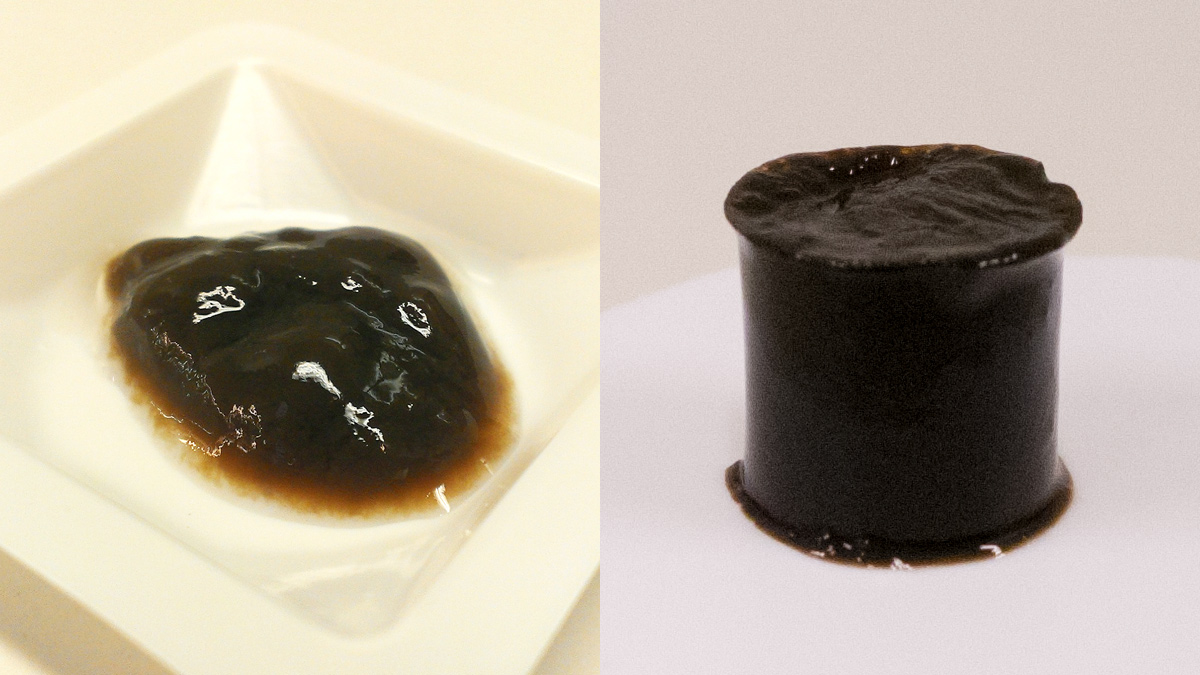
Extracted acidic EPS hydrogel = Kaumera Nereda Gum – Courtesy of Royal HaskoningDHV
The Kaumera extraction process has operated on two sites in the Netherlands and has been scaled up to deliver the first commercial shipment of 20 tonnes of Kaumera Nereda Gum in March 2020.
The drivers to develop more value from sludge are clear and Lisa Mansell, Chief Engineer (Innovation) for United Utilities says:
“United Utilities is keen to explore more ways of extracting more value from wastewater, which will help us to achieve our Circular Economy vision. The potential for the Nereda technology to open the door for more resource recovery has always been a key additional benefit for use of the technology to us. The application of Nereda technology at large scale, such as the plant at Blackburn WwTW – which will be the largest new build Nereda plant in Europe – means the business case for resource recovery becomes more economically viable. As a result, we’re looking forward to exploring the potential of the Kaumera opportunity with Royal HaskoningDHV.”
A holistic approach to AMP7
AMP7 will see a record water company investment of £5.7bn to meet the Water Industry National Environment Programme (WINEP) drivers, whilst being challenged to deliver operational efficiencies and carbon reduction. The majority of WINEP expenditure is associated with meeting new phosphorus consents with £2.8bn allocated to upgrade 783 WwTWs. The default position in the PR19 business plans of chemical dosing for most sites, is untenable in terms of sustainability and carbon, risk to future chemical cost increases and lack of UK ferric capacity supply (with a predicted shortfall of around 200,000 tonnes pa).
In parallel to this, deregulation of the bioresources market (water company sludge businesses) in England and Wales has been implemented as part of the Water 2020 programme. This was planned by OFWAT following the Office of Fair Trading (OFT) 2015 review of the bioresources market, which highlighted large variation in sludge treatment costs between water companies and has resulted in large reductions in TOTEX for the bioresources businesses in AMP7.
Deregulation is likely to drive changes to reduce cost, specifically: cross boundary trading, cross sector trading and separation of sludge businesses. There is, however, no indication it will trigger deployment of radical valorisation technologies from other sectors in the short-term. A holistic approach between the wastewater treatment and bioresources businesses will ensure technology selection to meet the WINEP P consents will deliver maximum long-term sustainability.
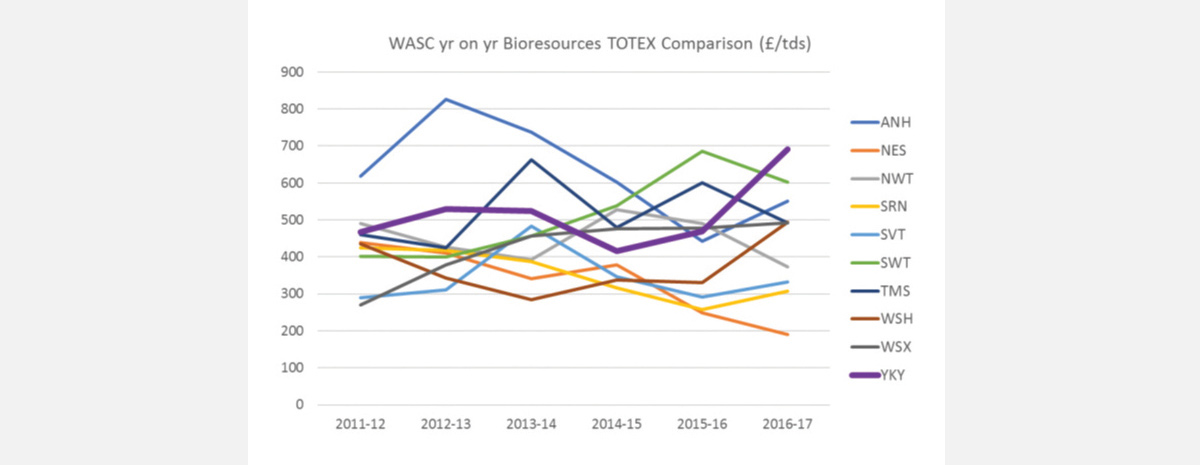
UK water company year on year bioresources TOTEX Comparison (£/tds) – Source: OFWAT
Future bio-polymer markets
In 2018, the formulated products sector, which contributes £129 billion Gross Added Value to the UK economy, identified greener formulation as a strategic priority to address current sustainability pressures on industry. This represents an opportunity for the UK water sector to develop an asset base that can effectively harvest the organic pollutants in wastewater and covert these into high value bio-polymers, with any residual material sent to existing AD assets for energy and nutrient recovery.
High value product generation fits with OFWAT’s strategy to support innovation, designed at changing current practice in AMP7. OFWAT state that ‘innovation must be at the core of every company’ and a £200m innovation fund designed to facilitate and reward innovation has been launched. This is designed to foster collaboration between companies to accelerate innovation, of which development of bioproducts should be a key theme.
Conclusions
The water industry is facing combined challenges of new P consents under the WINEP programme, whilst continually reducing costs and focusing on moving towards zero carbon. AMP7 will be a time of rapid change and it is essential that technologies are installed that will meet the current consents and financial challenges, whilst building the platform for wastewater treatment to play a key role in the circular economy. OFWAT recognises this, with it requiring ‘innovation to be at the core of every company’.
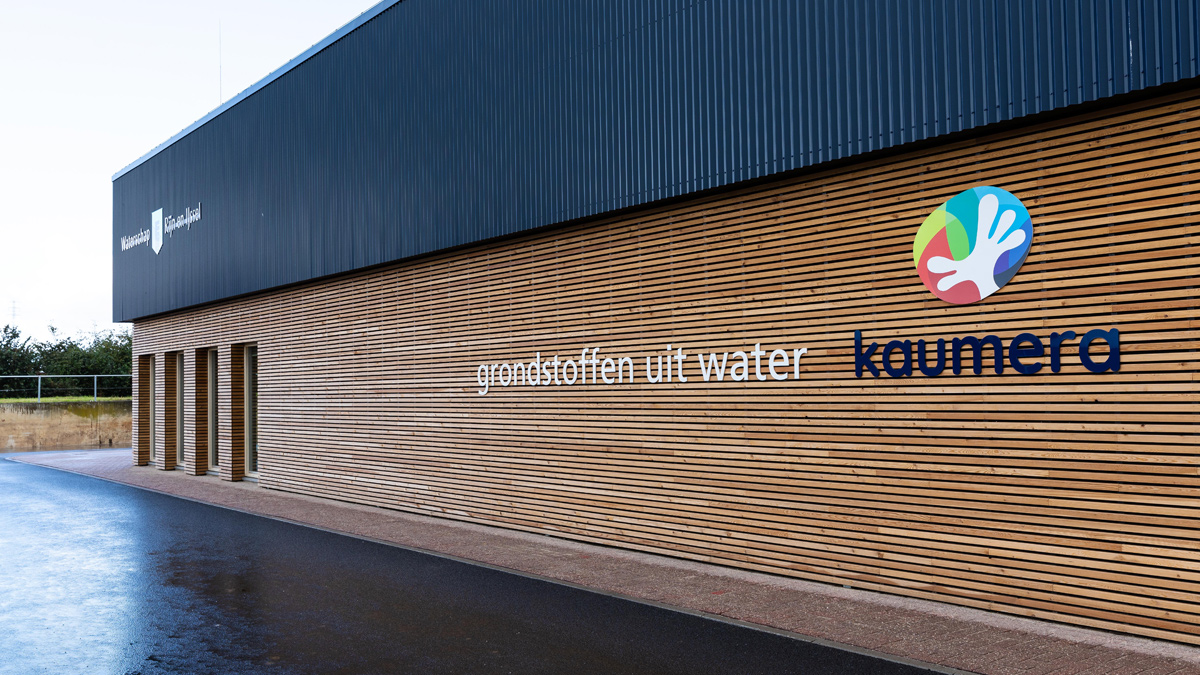
The plant at Zutphen – Courtesy of Royal HaskoningDHV
Nereda technology already offers a low CAPEX and OPEX solution for bio-P removal, but the future implementation of Kaumera Nereda Gum to harvest a high-yield, high-value raw material from the aerobic granular sludge, represents a highly disruptive technology providing multiple benefits across the wastewater and bioresources businesses. In order for this technology to play a role in meeting the challenges of the WINEP programme, the future benefits of the Kaumera extraction installation should be considered as part of the technology selection process.
This paper was prepared by Paul Lavender, Director – Water Utilities (UK), Véronique Renard, Nereda Account Manager, and Barry Oliver, Nereda Regional Sales Director, all with Royal HaskoningDHV.
For more information: Royal HaskoningDHV | +44 (0)121 709 6521 |www.nereda.net



